Globetrottin
BY GOWAY




BY GOWAY



It’s common for local women to harvest water lillies from the waters of the Mekong River, as seen here in the Moc Hoa district of Vietnam, one of Southeast Asia’s top trending countries.
Miles with NBC’s Amber Pfister
the Slow Food Trail of Mumbai Aman Dosanj digs into India’s farm-to-table renaissance.
New Trendsetters: Beyond the Icons

Swiss Timing Is Everything (Unless the Wind Disappears)
Setjetting Through the Mission: Impossible Movies
Chasing Sunshine in the Philippines 42
Finding the Joy of Missing Out in Finland

Behind the Trends That Define the Way We Travel
Five Goway experts unpack some of the lasting trends in travel. 54
Event Tourism Reimagined from Screen to Scene 56

Backstage with Cirque du Soleil
Under the Stars of the Judean Desert 62
Central America’s New Chapter
Why Belize, El Salvador, Guatemala, and Nicaragua are experiencing a moment.

EDITOR-IN-CHIEF Mitchell Alexander Fawcett
MANAGING EDITOR Aren Bergstrom
DESIGNER Negar Tavakol
CREATIVE PRODUCTION Melissa Mirabelli
PARTNERSHIPS Lori Petteplace




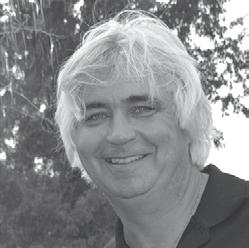










Globetrotting is published by Goway Travel
Web www.goway.com
Email info@goway.com
Social @GowayTravel
Phone 800-387-8850
Globetrotting is committed to the human side of travel. Thus, all the stories in Globetrotting are produced without the use of Artificial Intelligence. Thank you to our travel partners for their support in this volume of Globetrotting : Destination Gold Coast, Samoa Tourism Authority, South Australia Tourism Commission, Tourism Australia, Tourism and Events Queensland, Tourism Northern Territory, Virgin Australia
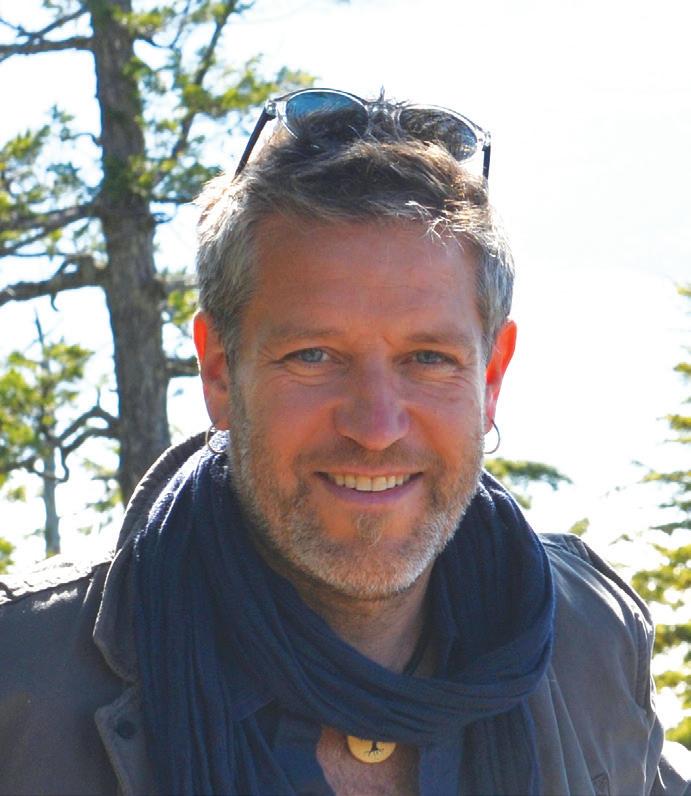
Crai Bower writes and shoots long-form articles like “Wildlife Spotting in British Columbia” (Condé Nast Traveler). Other recent work covers horseback riding under Mt. Cotopaxi (AARP), natural golf course design (Garden & Gun), and wilderness resorts (Bloomberg Pursuits). Crai received a 2022 Lowell Thomas Award for Excellence in Travel Journalism. Follow him on Instagram @travelcrais.

Aman Dosanj is a former England and Arsenal footballer— the first South Asian to do so. Now, she is known for her ability to educate, connect, and tell stories through The Paisley Notebook, a table-at-the-farm pop-up dinner series in the Okanagan Valley, British Columbia. Her writing has appeared in Food & Wine, ELLE Canada, and The Globe and Mail. (Aman Dosanj photo courtesy of Yarrow Froehler.)

Nicole Edenedo is a travel journalist based in New York City. A former television reporter and anchor, Nicole traded in her microphone for a passport and now covers river cruises, trains, sports tourism, luxury, and winter trips around the world, with bylines in publications like AFAR, Cruise Critic, and Travel Weekly. This Los Angeles native loves exploring new destinations through its food, nightlife, vintage clothing stores, and scenic walking paths. Follow her on Instagram @NicoleE_TV.


As I welcome you to our trends issue, I’m reminded of a time in my early career writing for fashion magazines. It was a tornado of trends, constantly shifting and swirling at breakneck speed, dictated by temperamental cultural climates.
Travel trends are a much calmer exercise in forecasting. They form more gradually, reflecting deeper shifts in how we connect with the world. The way we travel changes in response to culture, technology, world events, and our collective pursuit of meaningful experiences. Travellers take time to acclimate to new ways of exploring, and so does the tourism industry as it adapts in response.
The trends we cover in this issue are informed by our decades of experience. Our cover story (pg. 46) is a unique take on five trends that are shaping travel today. As an editor, am I allowed to pick a favourite? (It’s rail travel’s renaissance.)
At Globetrotting, we’re particularly keen to cover emerging new destinations. “Chasing Sunshine in the Philippines” (pg. 40) is written by our own Reyel Lacson, a Filipino native. Tourism is on the rise in this radiant country, and we’re thrilled to see Coron, Boracay, and Siargao get their time in the sun.
Travel doesn’t have to be about chasing the next big thing. We’ve seen many
EDITOR’S LETTER
trends come and go, and even the most intrepid adventurers still embrace the familiar sometimes. The beautiful thing about travel is that it gives opportunities to explore new possibilities, completely on one’s own terms. But we know our Globetrotting readers like to keep things fresh. There’s a good chance you’ll be struck by a trend in this issue. Change is in the air for those who seek it.

Mitchell Alexander Fawcett Editor-in-Chief
Get the latest on fascinating new stays, flights, and tours around the world.



Starting May 21, 2025, Scandinavian Airlines is launching a direct route from Seattle to Copenhagen. Operating five times a week on an Airbus 330, this new route offers direct access to the Danish capital, with its famous waterways and award-winning restaurants. Copenhagen is also a gateway to surrounding Scandinavian nations, with Sweden only a short drive across the Oresund Bridge and Norway a quick flight to the north.
The Rio Perdido Hotel & Thermal River offers travellers the chance to escape into the beautiful Costa Rican wilderness of Guanacaste, a natural wonder in its own right. This spa resort is located only an hour from the gateway city of Liberia, but feels hidden away alongside a thermal gorge, which offers a natural wonderland for guests to explore. Guests stay in one of 38 bungalows and can enjoy curated wellness programs or the freedom of the surrounding wilderness. In addition to natural hot springs that are courtesy of the thermal gorge, Rio Perdido also features 32 km (19 mi) of hiking trails, ziplining, and tubing.
Discover curated wellness experiences in some of the world’s most popular destinations with Goway’s new Ultimate Wellness travel packages. Crafted with a holistic approach to wellness, the eight new Ultimate Wellness trips offer travellers diverse ways to reconnect with themselves, each other, and the natural world. Each trip includes journeys to several places within a single country, luxury spa experiences, mindfulness or meditation practices, time in nature, cooking classes, and cultural encounters that include time learning about some of the world’s oldest spiritual traditions. Find an Ultimate Wellness trip for you at goway.com/wellness.
Beautiful, uncrowded, affordable —welcome to Samoa.
Samoa is a tropical island paradise in the heart of the South Pacific Ocean, only a few hours away from major hubs like Auckland, Sydney, Brisbane, Fiji, and Hawai’i. It’s also the first place in the world where you can watch the sunrise each day.

Lush jungle-covered mountains, cascading waterfalls, roaring natural blowholes, glistening white sand beaches, year-round tropical climate—need we say more?
The Samoan people’s warm, welcoming, and authentic hospitality perfectly complements the archipelago’s rugged natural beauty, creating a great, relaxing atmosphere. Free from massive crowds or overwhelming tourist traps, you’ll find more competitive and affordable rates than other South Pacific destinations, regardless of whether you’re on a family vacation, a destination wedding, a romantic honeymoon, or a spontaneous solo trip. Sites like the mesmerizing To Sua Ocean Trench, Papaseea Sliding Rock, Alofaaga Blowholes, Sale’aula Lava Fields, and abundant water activities promise incredible island escapes without sacrificing quality or value.
Connect to Samoa from North American gateways like Vancouver, Los Angeles and Dallas via Fiji with Fiji Airways or, alternatively, via Auckland, New Zealand with Air New Zealand. Samoa’s proximity to Fiji, Australia, New Zealand, and Hawai’i makes it a great addition to any multi-destination trip in the South Pacific.





Artist: Design studio Plains of Yonder (Katrina Crawford & Mark Bashore)
Directors Katrina Crawford’s and Mark Bashore’s Seattle-based, Emmy-nominated studio Plains of Yonder are the creative minds behind the iconic opening credits sequences of HBO’s hit series The White Lotus. This season, viewers are whisked away to the fictional White Lotus resort in Koh Samui, Thailand, where drama and mystery unravel amid the lives of some of television’s most dysfunctional and privileged guests.
Jungles, villages, temples, lagoons, epic battles, and disasters-at-sea depicted in a series of painted Thai murals are brought to life with digital animation, showcasing the intricate, ornate, and mythological art style typical to Thailand.
“When we make a title sequence, we focus almost entirely on capturing the mood, the tone and the psychology of the show,” said Crawford and Bashore. “We compose a visual gateway to enter the world of a TV show; tangential yet deeply linked to the show itself. In the case of The White Lotus titles, they are so tied to location that you could almost say they are a mini travel escape in their own right.”
Plains of Yonder is an Emmy-nominated creative studio headed by directors Katrina Crawford and Mark Bashore. They concept, create, and direct narrative and visual solutions including film, brand design, physical installations, interactive art, interior design and audio art.
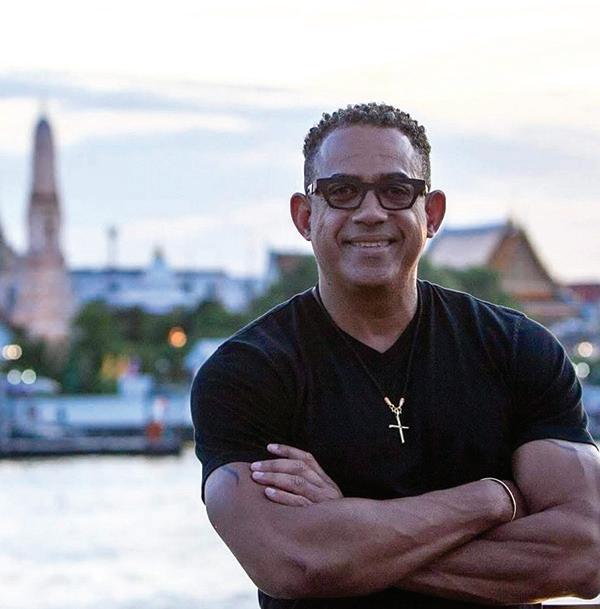

Luxury wellness travel is having a moment, and with the popularity of TV shows like The White Lotus (see page left), there are few places more associated with wellness travel than Thailand. To learn more about luxury wellness travel, we connected with Steve Johnson, Marketing Manager from Tourism Authority of Thailand (NY Office), who shared his insight into this booming travel trend.
Why is luxury wellness travel so popular right now?
Post Covid, the world has experienced a paradigm shift, with people prioritizing their overall wellbeing. Wellness travel is seen as essential to these overall wellness goals.
What are the top things to know when booking a high-end wellness retreat?
First, always plan with reliable travel experts. Second, choose a retreat that centres on your wellness goals. Finally, make sure to reserve time to explore outside the resort. Discovering a new part of the world is a form of wellness as well!
Why is Thailand a leading wellness destination?
Thailand offers some element of wellness the entire length and breadth of the country. In every province, every town, you will find some unique wellness experience at all budget levels being offered.
What is a unique wellness experience that more people should know about?
Sleep therapy and various forms of mental detox, which can leave you feeling like a new person. What’s best is that you leave equipped with practical coping mechanisms that you can incorporate into your daily life back home.
What’s a hidden gem destination for wellness?
Hua Hin is mostly unknown to North American travellers. It’s often promoted as a beach destination, but the wellness makes
it stand out. It’s where you’ll find Chiva-Som, one of the best luxury wellness retreats in the world.
What’s a common misconception about wellness travel?
That wellness experiences only include massages and yoga. It’s so much more than this! It’s all encompassing and deeply personal. It allows you to discover something new about yourself.
What is the most memorable wellness experience you’ve had?
I remember a non-verbal exchange with a farmer in Mae Hong Son that truly reaffirmed my faith in humanity. I was sitting in a hut when a farmer climbed up from the rice paddy and silently sat alongside me. After several minutes, he got up and went along Su Tong Pe Bridge, motioning for me to follow. Growing up in New York, you learn to be wary of strangers, but since I was in such a beautiful location, I obliged and followed him. The farmer took me back to his house just off the bridge and served me hot tea and a type of ripe banana that I had never had before. He then taught me to shoot a bow and arrow before he bid me farewell and I continued on my way. This short, but meaningful exchange reminded me of our shared humanity and that the spirit of generosity and curiosity is alive and well.
This fine dining restaurant welcomes every guest with its signature amuse-bouche.
Mikla is a Michelin-starred restaurant perched high atop a hotel in Istanbul’s lively centre. Since its opening almost 20 years ago this bite-sized welcome has been served to every guest at the start of their dining experience. It’s simply too scrumptious to consider serving an alternative.
This amuse bouche is inspired by balık ekmek, a beloved local fish sandwich served by Turkish street vendors. Here a painstakingly delicate bread cracker is topped with a sliver of smoked fish (locally caught sardines or anchovies depending on the season). It’s meant to be eaten with your hands and dipped in a tangy lemon olive oil sauce.

This shop goes all in on the zero-proof trend.
In the 19th arrondissement of Paris, a small shop has a bold mission: selling a wide array of alcohol-free wines, beers, and spirits in a city that loves to imbibe. Business is thriving, and a community of sober and sober-curious patrons keeps the door revolving. They stock over 500 lovingly curated products with a focus on local, organic, and sustainable options. Add the shop to your tour of Paris and catch one of their frequent tasting events.
Le Paon Qui Boit (The Drinking Peacock): 61 Rue de Meaux, Paris, France

This oasis hotel offers the definition of Moroccan opulence mere minutes from Jemaa el-Fna in Marrakech.

Escape to an oasis within one of North Africa’s most iconic cities. Voted as the best hotel in the world by Condé Nast Traveler, La Mamounia in Marrakech offers true opulence in every element of its 5-star service and design.
The hotel is an architectural wonder, with 135 rooms, 71 suites, and 3 riads (traditional Moroccan palaces), which all provide exquisite luxury and a shockingly quiet environment for such a central location. Large mashrabiya
windows flood each room with abundant natural light, while elaborate woodwork emphasizes traditional Moroccan designs. Guests can enjoy wellness treatments at the massive 2,500 sq-m La Mamounia Spa, dine on award-winning cuisine at four on-site restaurants, or relax in a quiet tearoom that transports them to centuries past. The attentive and discrete service from the on-site staff completes the exquisite experience of staying at this truly 5-star property.
RECOMMENDED
Follow these globetrotting content creators on Instagram to get inspired for your next travel adventure.



Dr. Nabila Ismail is a licensed pharmacist turned marketing professional, content creator, and freelance journalist. Her socials are flooded with solo female travel experiences, long stay tips, and travel inspiration to Morocco, Brazil, and Sri Lanka. You’ll also see her volunteering in Zimbabwe and Lebanon, practicing Muay Thai in Thailand, or taking barista classes in Kenya. Like she says on Instagram, if the main character in Eat, Pray, Love was brown, it would be her.
Kemoy Martin is more than just a globetrotter; he’s an entrepreneur, speaker, and influencer. Born in Kingston, Jamaica, and raised in Brooklyn, NY, he’s spent the past decade journeying through 75 countries and building a career that blends his entrepreneurial spirit with his passion for exploring every corner of the world. Follow to find Kemoy on a Disney Cruise as an adult, surrounded by turtles in Zanzibar, or visiting the most luxurious places in Monaco. His reels transport you to a different country each week and offer some great points of view for unique experiences.
Social media couple, Jade and Denzel, are on a quest to make your feed (and travel) more colourful, memorable, and bucket list worthy! Discover their info-packed content on various destinations around the world spreading across five continents, 24 countries, and over 100 cities. Their socials cover the best things to do in Hawai’i and Japan, travelling to Egypt during summer, unique experiences and the best beaches in Thailand, and lots, lots more.
We test the latest in wearable tech to see if style meets substance.
TESTED BY NAVYA BHASIN, SAEL FORSTER, MITCHELL ALEXANDER FAWCETT
What happens when a classic American eyewear brand joins forces with Meta, the social media juggernaut? The Ray-Ban Meta Smart Glasses are the latest entry in the growing field of wearable tech. They feel like traditional eyewear, but cleverly hide technology that snaps photos and videos, plays audio, and makes phone calls. Meta’s AI assistant delivers a long and growing list of interactive features.
The Globetrotting team put this tech to the test in tropical jungles, ski slaloms, and city streets.
Audio: We loved that music, calls, and the AI assistant play around the ears, allowing you to remain aware of the world around you.

AI: Like all things AI, it takes time to get acquainted with a computer friend. The technology is impressive, though—ask it to describe a landmark and you’ve got a tour guide in your ear.
Setup: While the unboxing and setup process is supposed to feel Apple-like, all our testers stumbled through cumbersome setup issues.
Price: Starting at US $299 / CA $369, these seem like expensive toys. However, they’re still less expensive than many regular high-fashion shades.
Camera: The impossibly small 12mp camera delivers impressive quality in photos and videos. Capturing content from eye-level takes some getting used to.
The Bottom Line
If you love to enhance your travel with cutting edge tech, you’ll undoubtably have fun playing with these. Taking photos and videos on the fly from your eyeline can capture moments your smartphone wouldn’t. The nascent AI features will likely improve with time to become truly practical for globetrotters—for instance, the live translation feature is currently almost unusable but could become a gamechanger.
Style: These are true Ray-Bans, and the technology that powers the glasses is impressively discrete and light. They’re available in a wide array of sizes, shapes, and colors.
Paris is an ideal city to explore whether you’re capturing content on your first visit or simply soaking up the atmosphere on a return trip with family and friends.
Show off your foodie bona fides as you feast on roast lamb and potato gratin dauphinois at the picturesque Le Train Bleu restaurant at Gare de Lyon.
Snap your iconic shot of Leonardo da Vinci’s Mona Lisa at the Musée du Louvre.
Capture a sunset timelapse from the grass of the Champs de Mars as the Eiffel Tower puts on its nightly light show.
Pose for the perfect selfie in front of the Eiffel Tower from the steps of the Jardin du Trocadéro.
Enjoy a quiet dinner of creamy risotto with oyster mushrooms and artichokes or pan-fried scallops in a coral sauce at Le Petit Retro, which has served patrons since 1904.
Lose yourself gazing at Claude Monet’s massive Water Lilies murals in the Musée de l’Orangerie.
Head up Butte Montmartre to the steps of the Basilique du Sacré-Coeur to watch the sunset from Paris’s highest point.
Find a quiet spot on the Right Bank near the Pont de l’Alma for perfect views of the Eiffel Tower from across the Seine.
Brave the crowds to get inside the Cathédrale Notre-Dame de Paris to see the restored sanctuary with its brightened colours and brilliant rose windows.


until after World War I in 1919.
Claim your front-row seats to nature’s greatest show.

The thunderous march of millions across the Serengeti into the Masai Mara isn’t just the largest mammal migration on Earth —it’s one of the most breathtaking wildlife spectacles you’ll ever witness. Over a million wildebeest, accompanied by hundreds of thousands of zebras, gazelles, and other species, heed the call of rainfall and embark on a cyclical journey between the Serengeti in Tanzania and Masai Mara in Kenya in search of greener pastures, confronted by lions, hyenas, and crocodiles eager to claim their share of the herd.
The dramatic crossings of the Mara River during the dry season, typically from July to October, are some of the most exciting times of this year-round cycle. They’re also some of the busiest. The best lodges in the Serengeti and Masai Mara book up quickly and far in advance, so planning your visit requires thoughtful preparation well in advance of travelling. It’s absolutely worth it, though, as watching the circle of life unfold in front of you, with wildebeest as far as you can see, is a once-in-a-lifetime experience you won’t find anywhere else.
Submit a 55-second video and win!
The Goway Micro Film Festival will be awarding over $55,000 in prizes with screening events in LA and Toronto. Enter now at: goway.com/microfilmfestival
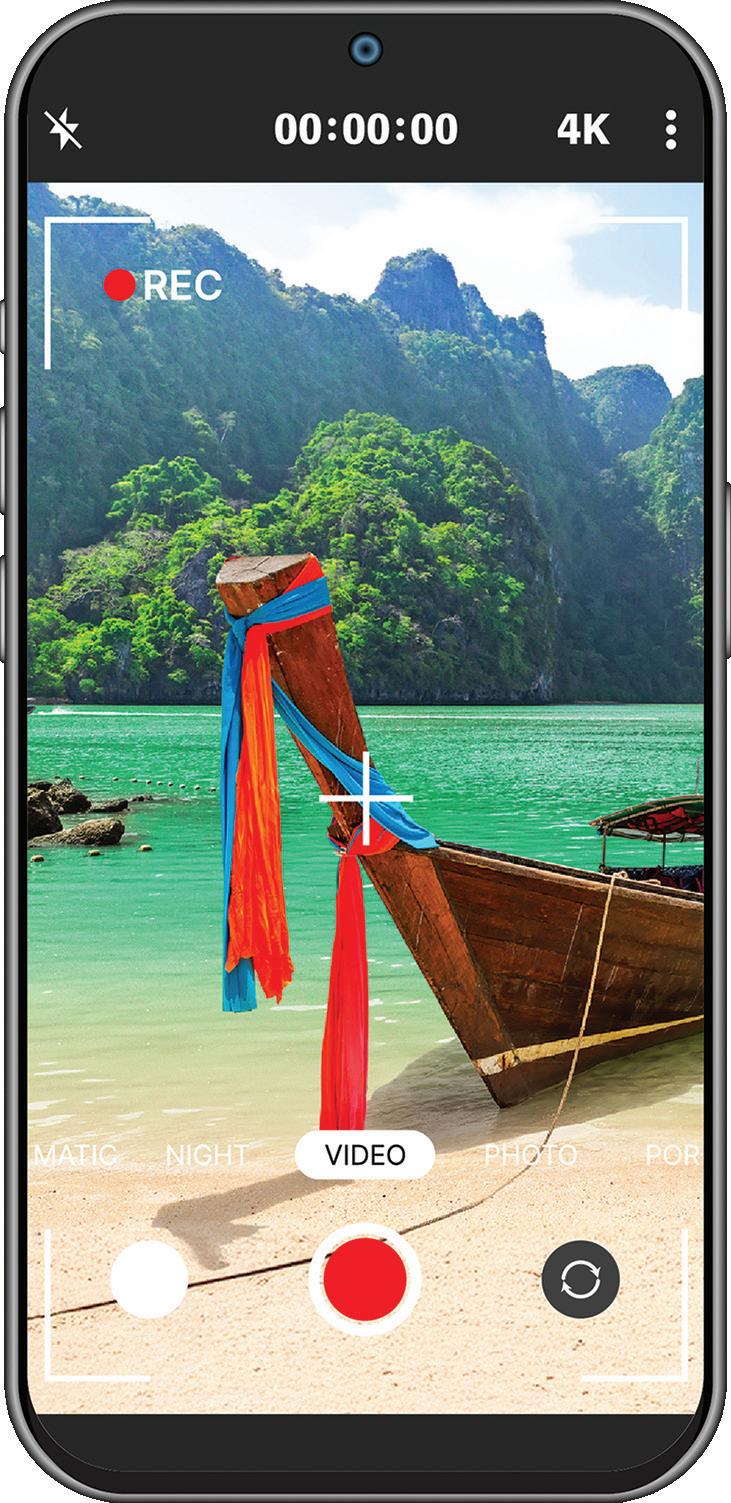



How travel and adventure shaped this Emmy award-winner’s career.
WORDS MITCHELL ALEXANDER FAWCETT

The Beverly Hills Hotel welcomes guests with a cascade of green and white stripes lining the ceiling of its iconic entrance. My interview subject greets me inside with a warm hug, dressed in a green and white striped two-piece midi dress. As she tells me, she knows how to dress for the setting. We have a table at the hotel’s historic Polo Lounge, a 113-year-old institution and the perfect setting for the California contemporary who sits across from me. Amber Pfister is an Emmy Award-winning correspondent for NBC’s California Live. It’s a well-deserved role for this skillful storyteller, and one that has been shaped by her lifelong pursuit of travel. Over lunch we discuss her intrepid career, her well-worn passport, and her journey starting a family.
Earlier in the day Amber was on location at Da Barbara, a tiny gem of a restaurant in Hollywood. She dishes about Chef-Owner Barbara Pollastrini’s migration from Italy and the three framed spoons on the kitchen wall that came from her family’s kitchen in Rome. She relishes every detail. I make a mental note to book a reservation before her segment airs and reaches millions of viewers. California Live is a major platform that sends Amber to all corners of the state in search of the best food, travel, and lifestyle trends. “We’re not just taking you somewhere,” she says. “We’re truly telling the story of the people behind it.” I can see that she considers this a privilege. Her stories are love letters to her home state.

We have a friendly chat with our server who tells us about the McCarthy Salad, named after the famed polo player Neil S. McCarthy. It’s been on the Polo Lounge menu for over a century. Amber is sold and orders it on the spot, unable to resist sampling such a storied dish. I see the seed planted for a future California Live segment. Though we could go on about the Golden State, it’s a small territory compared to the global footprint of Amber’s travels, where she first developed her passion for collecting stories.
Amber has always been on a mission to find the best places to explore, even before she had a platform to share it. She’s a natural journalist; resourceful, curious. Friends and family know her for keenly mining them for recommendations.
Family road trips comprised most of her travel experiences in her younger years, growing into a pent-up wanderlust. “I had such an intense desire to see the world in my 20’s.” She craved the formative, eye-opening experiences of solo travel, and embarked alone to Japan, Australia, and Western Europe.



“I loved the world of hostels. I craved meeting people from other countries and socializing with strangers. Walking for hours in cities with only $2 in my pocket.”
Amber met her now-husband Dan in 2014 at a mutual friend’s spontaneous birthday weekend in Vegas. As “adventure buddies,” travel took on a new meaning for them, and they forged a deep connection through their globetrotting journeys. In 2019 they embarked on the Salkantay Trek in Peru, a more ambitious, lesser-known path to Machu Picchu. This trip was intended to be much more than just a vacation—at the pinnacle they exchanged vows and descended 8,000 feet to Cusco as husband and wife.
With travel core to their marriage, they vowed to continue exploring together before having children. Hiking became their favourite way to see the world. “Immersing in nature and travelling by foot showed us a whole other side of the world.” Their most meaningful hike together was in the Pyrenees mountains. Straddling the border of France and Spain, they recreated the same path Dan’s grandparents took fleeing the Nazis in World War II.
Amber now has two daughters Lyla, 4, and Lily, 1. Her journey starting a family has always been in the public eye. Her first pregnancy with Lyla was announced on the air in 2020 with a surprise ambush from her co-hosts. While pregnant with Lily in 2024 she bravely shared her difficult IVF experience in a California Live interview. “It helps other women feel less alone when we share our stories,” Amber says of her open-hearted approach.
She’s just as candid when she talks about struggling with post-partum anxiety. Overwhelmed by the isolation of her maternity leave, she sought an escape. With Lyla and Lily in the care of her mom, she travelled 8,851 km (5,500 mi) to Tokoriki, Fiji with her husband. Tokoriki is a small, remote island just a mile long, west of the main island Viti Levu. “I wanted to feel completely disconnected because I was so overwhelmed with anxiety.” Travel was always a time for meaningful connection in her marriage, and the opportunity to reconnect with Dan was essential in her recovery.
“I’ve seen my travel style change in ebbs and flows,” Amber tells me, and her chapter as a young mom has certainly been one of change. A slower pace and a bit of luxury are a well-earned contrast to hostel life: “I have a whole new appreciation for places that make me feel relaxed and completely disconnected.”
Her daughters both have passports, and while shorter family trips to Mexico are perfect for now, Amber knows adventure awaits them around the corner. “As parents, one of the things we cannot wait for is to see the world with our girls. It’s the greatest gift we can give them.” She recalls the hike to her mountaintop wedding and being surprised by the young families trekking to Machu Picchu. It was inspiration that one day her family could chart such a path.
Amber’s own path has taken her right where she is meant to be: “Travelling the world is a huge reason I pursued the career I have now. I knew I wanted to be part of a show that explores California and to help tell the story of the amazing people here.” In every conversation she is effusively grateful for what her ambition has brought her. She has crafted her life’s journey with intention: a career of telling stories, and a family who will write them together.
India’s farm-to-table renaissance is in full swing—and it’s exciting to watch.
WORDS AMAN DOSANJ

Feeding people isn’t just something Indians do—it’s who we are. Even after eight trips to India, I still find that the motherland keeps me guessing. Much of this has to do with my transformation from a bratty diaspora-born teenager to a self-taught chef with a farm-based pop-up dinner series in British Columbia’s lush Okanagan Valley.
Over the last decade, the farm-to-fork movement has gained traction across India, with chefs, brewers, foragers, and artisans returning home reinvigorated after stints abroad. But this crop

of talent isn’t confined to the self-imposed hyper-local parameters commonly found at my dinners or in top food-fuelled cities like Montreal, Copenhagen, and Melbourne. Instead, it’s about re-writing broken narratives, healing from the scars of colonialism, and showcasing how much is possible in an India without borders. Restaurant sourcing teams scour high and low for the best of India, from Himalayan sea buckthorn and Nagaland chilies to crab from the bay. For me, Mumbai, India’s second-largest city in the state of Maharashtra, is at the forefront of that shift. The diverse 600-sq-km (231 sq-mi) hub on India’s West Coast is now

buzzing with chef collaborations, wild food festivals, and bar takeovers with like-minded industry folks from the Indian subcontinent and beyond.
The problem is knowing where to go in a city with no shortage of options. Fortunately, I have a trusty network of Mumbaikars to direct my every bite. First up: a cheeky pitstop at the Naturals ice cream kiosk at Chhatrapati Shivaji Maharaj International Airport before I jump into my Uber. Since its humble beginnings in Juhu in 1984, Naturals has expanded to 165 stores across 15 states, serving year-round staples like mango and tender coconut, seasonal specials (custard apple, called sitaphal, is a must), and festival treats, including a saffron-studded Thandai-inspired flavour for Holi.
a casual, modern space

That afternoon, I head an hour south to the restaurant Soam, which is buzzing with the chatter of multi-generational families and Mumbaikars refuelling with vegetarian comfort eats from Gujarat and beyond. Most of their produce hails from nearby Mahabaleshwar, a small farming town south of Mumbai where co-founder Pinky Chandan-Dixit grew up. But what sets Soam apart is the simplicity of their menu. Rarely do we see homey staples like Khichdi (a rice and lentil porridge) and banana leaf-steamed Paanki (a delicate buttermilk fermented rice batter with cumin, ginger, and turmeric) on restaurant menus out West.
After lunch, it’s over to The Cacao Mill by Subko, a dreamy chocolate factory-slash-café tucked away in the unassuming bylanes of the Colaba Causeway in South Mumbai. It’s no secret that much of the country’s cacao is sold to mass-market chocolate companies like Cadbury and Nestlé. Subko Cacao is not just crafting artisanal chocolate in the region; they’re part of a generation reclaiming it. And it’s fun to watch. Take, for example, how they cheekily “elevated” the childhood bars they grew up with—in this case, Twix, Snickers, and Reese’s— with hyper-traceable ingredients. Like its specialty coffee arm,
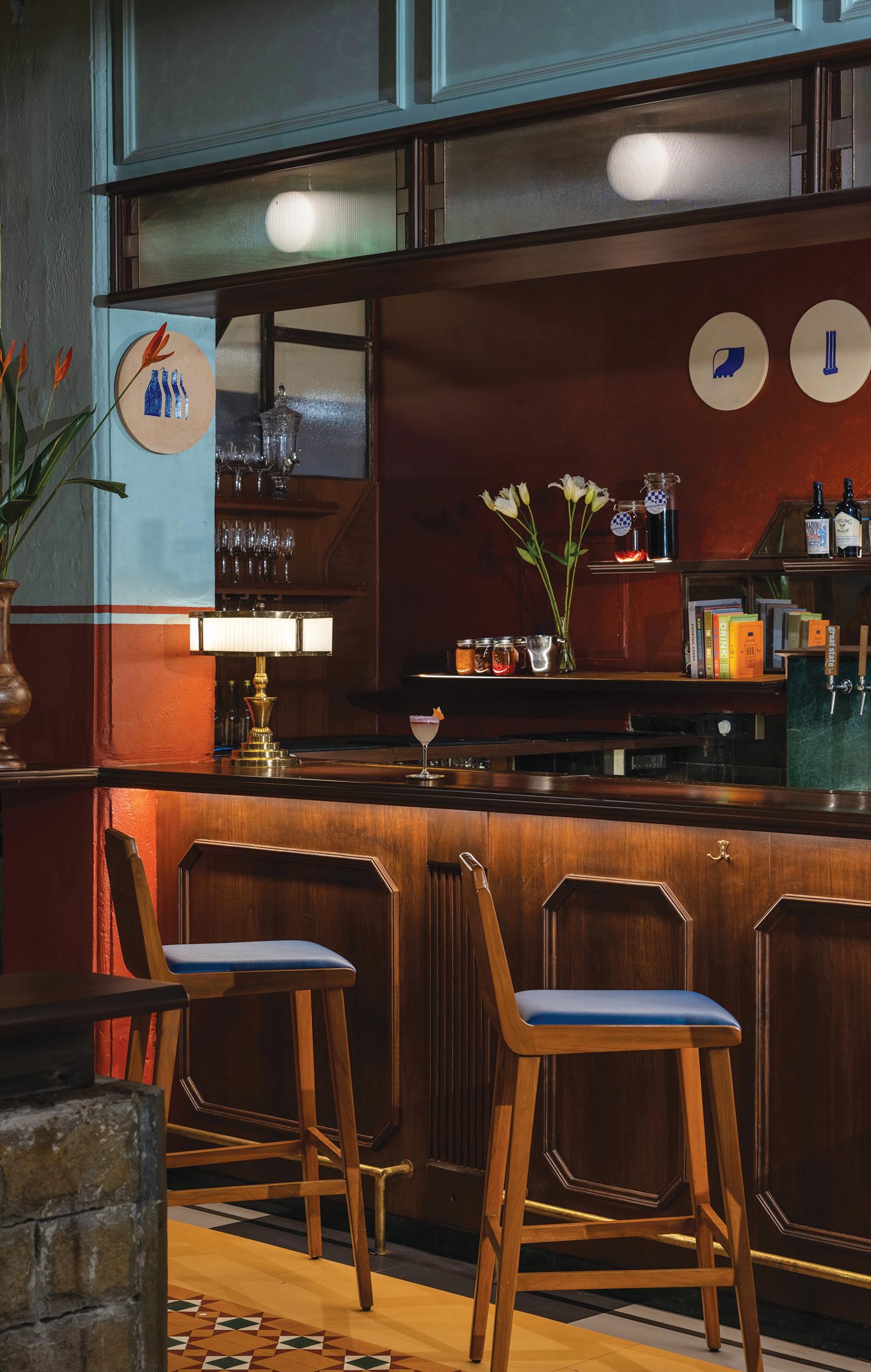
Roasted turnip kulcha is one of the seasonal dishes you’ll find on the menu at The Bombay Canteen (left); The bar at The Bombay Canteen offers a refined setting to enjoy a signature cocktail, such as the Phool or Curb Side (right).
they trade directly with farm partners and collectives—whether in the misty hills of Karnataka or the lush plantations of Kerala.
That evening, I pull into the parking lot of The Bombay Canteen, a 109-seat destination in Kamala Hills. Under the guidance of executive chef Hussain Shahzad (previously from Eleven Madison Park), the kitchen puts out thoughtful plates that are familiar in taste yet reimagined. One standout small plate was the Podi B**f Tartare (a water buffalo riff with tamarind dressing, smoked egg yolk, and dosa batter crisps). The dish taps into Shahzad’s
childhood memory of his mother scrambling eggs into the previous night’s “meat curry” and serving it with a fermented rice and lentil dosa. Raw and cured (and gooey egg) preparations are a relatively recent development in India. The Bombay Canteen is at the forefront of this culinary revolution with its Chilled Seabass Sev Puri and Garlic Crab Kulcha topped with a soft-poached egg.
When I first visited Mumbai 22 years ago, I couldn’t see the beauty beneath the smog. Now, I can’t get enough of it—and there is still so much more to discover.
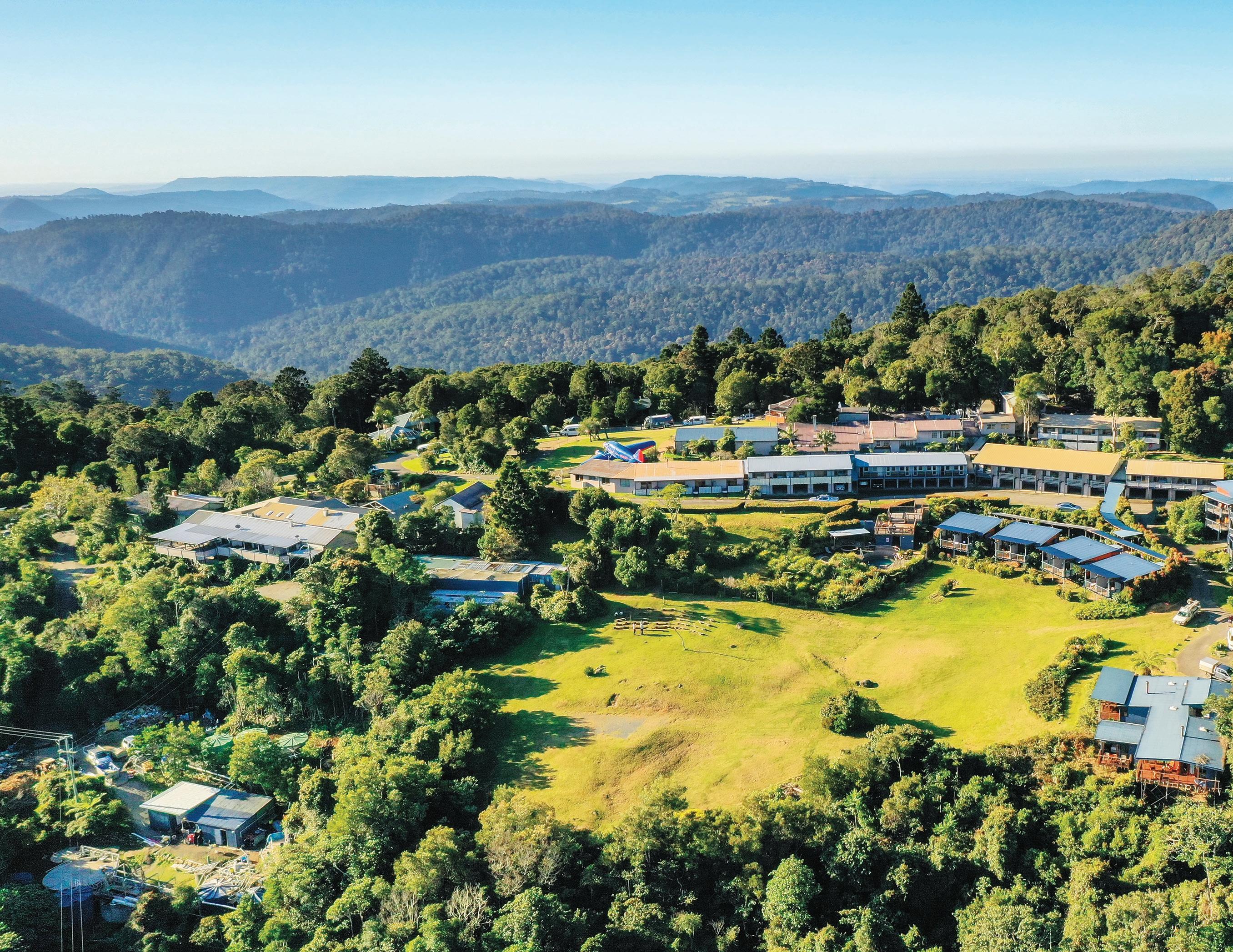
Discover how the Gold Coast, Northern Territory, and South Australia are quickly becoming Australia’s new hotspots.
WORDS SAEL FORSTER
A year in Australia granted me some of my most unforgettable travel memories. I rang in the new year from Sydney’s Royal Botanic Gardens, watching an explosive fireworks display over the Sydney Harbour and Opera House. I wandered through Melbourne’s iconic laneways with a coffee in hand, watching the city transform into an enchanting dreamscape of light and colour during the White Night art festival. And those were just the moments I caught on camera.
Some of the most vivid and magical moments were the ones that convinced me to put my camera down and live in the moment. These unfiltered moments are the ones that linger in my mind, revealing an extraordinary side of Australia beyond the usual that you’ll rarely find trending on social media feeds.
Beating trends is one of travel’s greatest rewards, and if you’re looking to explore Australia beyond the usual bucket-list stops, start with the Gold Coast, South Australia, and the Northern Territory—Australia’s next must-visit destinations.

There’s no better place to begin than the Queensland’s Gold Coast, blessed with over 300 days of sunshine annually and a favourite for many Australians. The Gold Coast’s world-class surf breaks, beaches, entertainment, nightlife, and lush rainforest hinterland are only a short drive from Brisbane, an international gateway into Queensland. Families will cherish the memories made at the adrenaline-pumping theme parks stretching from Coomera to Main Beach. Solo travellers will appreciate the selection of accommodations, beaches, and experiences from Miami Beach to Palm Beach. Globetrotters of all kinds will be drawn to the Gold Coast’s unrivalled opportunity for adventure and relaxation. North American snowbirds can take note; this is the perfect place for an extended stay while you escape those northern winters.
Cap all this off with a rising culinary scene rivalling some of the country’s best, featuring fine-dining options with a laid-back Queensland flair, vegan and clean eating eateries, trendy rooftop bars, vibing local cafes, and, of course, a deliciously fresh selection of seafood. You’ll also come across a few boutique vineyards during your adventures in the hinterland. So, be sure to sample the local Chardonnays, Cabernet Sauvignon, Shiraz, and Chambourcin, a red hybrid you likely won’t find anywhere else in the country.
From there, make your way toward the Northern Territory, where classic Aussie experiences take on a wild, exhilarating, and profoundly spiritual essence. This destination is shaped by 65,000 years of Aboriginal heritage and a unique pioneering history. Witnessing the sunrise and sunset over Uluru-Kata Tjuta National Park is an unforgettable experience as the rock formations and the land around them shift through a breathtaking palette of reds, oranges, purples, blues, and greens throughout the day.
Kakadu National Park, one of Australia’s largest national parks, offers nearly 20,000 sq-km (7,722 sq-mi) of cultural and natural wonders, with both rugged and luxury accommodation and dining. Its two neighbours, the vibrant capital city of Darwin and the vast wilderness area of Arnhem Land, further illustrate the Northern Territory’s striking contrasts. Darwin features a laid-back tropical city lifestyle, excellent waterfront dining, and more street art murals per capita than anywhere else in Australia. Meanwhile, Arnhem Land’s rugged coastline, rich Aboriginal culture, savannah woodlands, and hidden beaches framed by the Arafura Sea create an awe-inspiring atmosphere.
The Katherine region showcases the beautiful collision of the outback and the tropics, with plenty of gorges, hiking trails, hot springs, and limestone caves to explore. Be sure to join the three-day-long Barunga Festival every June to celebrate the country’s Aboriginal culture through storytelling circles and traditional sporting events alongside some of Australia’s best Aboriginal musicians and dancers.


Australia’s contrasts don’t end there. In the state of South Australia, you can go from the red desert sands to rolling green hills, blue waters, and golden wines. The charming, festival-loving, and walkable capital, Adelaide, sits on the doorstep of the famous Barossa, just one hour’s drive away, where you’ll find over 150 wineries upholding the region’s reputation as the country’s best. Readily as close to Adelaide is Kangaroo Island (a 20 min-flight or 1-hour and 45-minute drive and ferry ride), where you’ll find leaping kangaroos, lounging koalas, and whimsical seals and sea lions, all roaming freely in the wild. And Kangaroo Island’s natural features are just as bold as its wildlife. Discover the Remarkable Rocks—incredible clifftop granite boulders in Flinders Chase National Park shaped by erosive winds and impact from the sea over 500 million years—and peer through the dramatic Admirals Arch to see playful seals and their pups.
South Australia is also a hub for three of Australia’s most iconic rail journeys: The Ghan, the Great Southern, and the Indian Pacific, each offering a unique and comfortable glimpse into this flourishing region. One of the most memorable moments
comes during The Ghan’s journey from Darwin to Adelaide when you stop in quirky Coober Pedy, the world’s opal capital and where half the town lives in underground dugouts due to the extreme heat. Here, you can not only tour the mines but also eat and sleep in underground hotels and restaurants while collecting some of the most mesmerizing souvenirs in the country. If all this sounds enticing, you can hit up most of these sights on one of the country’s best road trips—the Explorer’s Way from Adelaide to Darwin.
These rising destinations are only beginning to outshine Australia’s icons, from the red sands of the outback to the ancient tropics of Queensland, the sun-drenched energy of the Gold Coast, and the tranquil coastal havens of Southern Australia. The best adventures belong to those who seek them early, so set your own course and experience Australia’s hidden wonders today.

An
WORDS
Can punctuality be learned? I travelled to Switzerland to find out. As a non-chronically late person who still manages to be a wee bit tardy sometimes, I thought I might glean insights into the mechanics of timekeeping here, where watch brands grace Geneva’s grandest façades and the trains are so ridiculously efficient, I calculated the exact moment a Lausanne-bound train would pass
behind a herd of clanging dairy cows based on the Château d’Œx-bound cars passing a few minutes before.
My explorations did raise one conundrum, however. Given that the Swiss wear their on-time pride on their sleeve like a Swatch, how does one explain the popularity of hot air ballooning, the planet’s least predictable mode of travel? This thought came to me one
afternoon when I was stalled with my basketmates high above a church’s hexahedral spire in the village Saanen, going nowhere fast. (I suppose you’re not late if you never arrive.)
I’d experienced other impressive engineering feats prior to my stranding above the spire, beginning with Switzerland’s vaunted railways. Climbing over the mountain directly outside of Lausanne seemed an impossible trajectory,

a series of switchbacks that would challenge most sportscars. I assumed, given I get seasick on an escalator, I would experience that mouth-watering, stomach-churning queasiness of rapid and repeated reorientations. And yet, our Belle Époque carriage (imagine plushlywoven seats and an arched wooden ceiling) snaked over the hill and slithered into a tunnel without me, or more importantly, my inner ear, ever noticing.
Like hot air ballooning’s dependence on the whim of the wind, Swiss cheesemaking depends upon nature’s mood for success. Each spring in the Pays-d’Enhaut, cows are led to alpine meadows at altitudes between 1,000 and 2,000 m (3280 and 6,561 ft) above sea level, where they forage upon fresh clover and native grasses. A bovine parade of flower-festooned cows signals their return to the parlor,
providing milk that will produce L’Etivaz, a floral, hard cheese endemic to the area.
I witnessed the cheesemaking process one afternoon and swiftly discerned that, like so much of Swiss culture, timing is everything. To create L’Etivaz cheese, fresh evening and morning milk is combined in a copper cauldron over wood-fueled heat at exactly 32ºC (89.6ºF), stirred, and allowed to curdle.

Crai Bower tries his hand at using a cheese harp, a traditional Swiss means of separating curds from whey (left); Hot air balloons are fuelled by a central burner that pushes hot air into the fabric, causing it to expand and become less dense than the cold air outside, and, thus, rise into the air (middle); The Swiss Alps are especially beautiful when seen from the comfort of a balloon basket (right)
The cheesemaker employs a cheese harp to cut the cheese into smaller grains at precisely the right moment, separating curds from the whey and reheating to 57ºC (134.6ºF) and constantly stirring before removal from the flames. The cheesemaker then uses a cheesecloth to remove the curds, places them in a wheel, and carves his initials like Paul Klee completing
a canvas. Miss your temperature setting, botch the curd and whey separation, or wait too long to remove curds from the fire and your cheese wheel careens off course.
Which brings me back to our wicker basket hovering above the steeple. Failure would ensue if this basket were filled with cheese


curds instead of six passengers and a pilot. Waiting for a breeze to propel us toward our down valley landing site, though I soon learn exact targets are never assumed, I can’t help but wonder whether Bertrand Piccard and Brian Jones, the pair who, in 1999, embarked from Château-d’Œx on the first successful circumnavigation by balloon of

the earth, were also stymied by dead air just 25 minutes into their 19 days, 21 hours, and 47-minute flight.
Were it so, I must assume, though perhaps not exactly Swiss by nature, Piccard and Jones were well-prepared to go with the flow.

The popular movie series starring Tom Cruise showcases globetrotting excitement at its finest.
WORDS AREN BERGSTROM
Movies and TV shows fuel our wanderlust. Watching James Bond looking dapper in a tuxedo at a Macau casino or Emily Cooper dining against the backdrop of the Eiffel Tower inspire us to experience some global glamour for ourselves. According to recent surveys, one in four travellers say that their favourite movies and TV shows shape their travel plans. Setjetting is truly a thing, and few movies inspire us to setjet more than the Mission: Impossible films. To mark the release of Mission: Impossible –The Final Reckoning and to help you shape your own globetrotting adventures, let’s journey through the filming locations of the seven films in the series so far.
Mission: Impossible 2
The heart of the second film takes place in and around Sydney, Australia . The villain’s lair is Bare Island Fort at the entrance to Botany Bay, while the climactic motorcycle chase takes place up the coast at Boora Point in Malabar. Other scenes take place at Sydney Harbour and as far as Broken Hill in the outback. Earlier, we also see Ethan in Seville, Spain and free solo rock climbing at Dead Horse Point, Utah


Mission: Impossible In the showstopping opening sequence, Cruise’s Ethan Hunt and his team go undercover in Prague, Czechia , with filming locations at Liechtenstein Palace, the Prague National Museum, and Charles Bridge. Later, he heads to Liverpool Street in London, England as well as the Chunnel and Langley, Virginia, though good luck getting access to CIA headquarters.
Mission: Impossible –Ghost Protocol
In arguably the most famous sequence in the entire series, Ethan climbs the Burj Khalifa in Dubai to infiltrate a secret meeting. The film’s opening sequences split between Budapest, Hungary and Moscow, Russia , while the climatic duel with the villain is in Mumbai, India in the Apollo Bundar area.


Mission: Impossible III
Mission: Impossible –Fallout
Ethan does a HALO jump onto the Grand Palais of Paris, France and chases Ilsa Faust through the streets surrounding the Arc de Triomphe. Later, he returns to London, England near Blackfriars and St. Paul’s. The climactic helicopter chase set in Kashmir was filmed in Fiordland National Park, New Zealand and Lysefjorden, Norway .

In M:i:III , Ethan and his team infiltrate the Vatican City to kidnap the villain before heading to Shanghai, China for a car chase near the Bund and Oriental Pearl Tower. Later, Ethan traces his kidnapped wife to the Xitang old town in Jiashan, China .

Mission: Impossible –Rogue Nation In Rogue Nation , Ethan tracks the villains to Vienna, Austria where he attends Turandot at the Vienna State Opera. The standout motorbike chase takes place on the Marrakech Highway in Morocco as well as near the Kasbah of the Udayas in Rabat and the old medina of Casablanca . Later, Ethan follows the villains to London and Oxford, England .

Mission: Impossible –Dead Reckoning Part One
The penultimate film takes Ethan to Abu Dhabi International Airport and the Liwa Desert of the United Arab Emirates before he returns to Rome for a car chase near the Colosseum. After a party sequence at Doge’s Palace in Venice , the setting shifts to the Austrian Alps and the Orient Express. While filming, Cruise rode his motorbike off a cliff at the Troll Wall of Møre og Romsdal, Norway , which stood in for the Alps.
The Southeast Asian nation is ready to wow travellers with its gorgeous beaches and laidback vibes.
WORDS REYEL LACSON
When I’m in the Philippines, it feels like the sun is wrapping me in its warm, familiar embrace. As a Filipino, it’s my home. And as a self-proclaimed beach bum, I spent countless vacations and long weekends on its pristine beaches, the golden rays kissing my skin as waves gently lapped the shore. Now, living in Toronto, Canada, I’ve come to appreciate the beauty of changing seasons. But when winter’s chill sets in and snow blankets the city, my heart yearns for the tropics and specifically the Philippines, where sunshine isn’t a fleeting gift but a mainstay of life. That’s when I find myself daydreaming of Coron, Siargao, and my forever favourite, Boracay.
Coron, Palawan, which is located southwest of Manila, is a paradise that feels like it was plucked from a dream. The jagged limestone cliffs, hidden lagoons, and crystal-clear
waters are nothing short of breathtaking. I remember kayaking along tranquil Kayangan Lake, the water so clear it felt like gliding through liquid glass. Coron is raw, a place where nature’s unadorned beauty overwhelms. It offers a stark contrast to Toronto’s urban skyline, where the closest thing to a lagoon is the reflective glass of skyscrapers.
In the province of Surigao del Norte in northeastern Mindanao you’ll find Siargao, known as the surfing capital of the Philippines. The laid-back energy, the palm-fringed roads, and the warm smiles of locals make it impossible not to unwind here. I’ve spent mornings riding the waves at Cloud 9 Surfing Spot and afternoons exploring the famous islands. In Toronto, my mornings are now spent navigating subway crowds and sipping coffee on the go. But in Siargao, time slows down, and the only rush is the tide coming in.



km
is
for its sandy beaches and impeccable
;
are traditional Filipino boats that are still used to access beaches such as the ones you’ll find in El Nido, Palawan (top right); While Boracay is a famous surf spot, it’s also an ideal location for paddleboarding (bottom right)
Of course, no trip to the Philippines is complete without a visit to Boracay. Boracay is a tropical island surrounded by stunning white sand beaches and clear blue waters located about an hour’s flight from Cebu or Manila. I’ve seen Boracay evolve over the years, from its bustling party scene to its recent transformation into a more sustainable destination. Visiting my go-to beach, with its iconic powdery white sand and magical sunsets, always feels like a reunion with an old friend. Walking along its shores when I went home in 2023, I appreciated the quieter moments—the sound of the waves, the feel of the sand between my toes, and the way the sky turns into a canvas of pinks and oranges as the sun dips below the horizon.
Living in Toronto has its charms—the multicultural food scene, the changing seasons, and the sense of possibility that
comes with living in a global city. But there are days when I just miss the simplicity of the island life, the warmth of the sun on my skin, and the salty breeze that carries the scent of the sea. In the Philippines, life feels lighter, more connected to the earth and to each other. If you haven’t experienced the Philippines for yourself yet, this might be the sign to put it on your travel list.
For me, chasing sunshine in the Philippines is about reconnecting with a part of myself that feels most alive under that golden glow. Toronto may now be home, but the Philippines will always be where my heart finds its light.

JOMO is all about the pleasure and peace of slowing down and intentionally getting away from it all.
Disconnecting in the winter seems like the most natural thing living beings do. Bears den in caves until spring. Certain frogs can freeze solid from the cold before later reanimating in the warmer months. Humans hunker down in cozy sweaters and fuzzy blankets by the fire with a watchlist of bingeworthy television shows long enough to get through the darkest days of the coldest season.
Some may call this survival instinct, others might say it’s the Danish pastime of hygge. Regardless, what these hibernal activities have in common at their core is the annual need to detach, to withdraw—sometimes in order to protect and preserve one’s wellbeing, sometimes to rest and rejuvenate. That’s why the latest travel trend JOMO, or the “joy of missing out,” might actually be best to experience in the heart of winter. And in a destination like Finland, where winter is the Nordic nation’s longest season, you can learn a lot about joy from the country consistently voted the happiest in the world.
As the polar opposite of FOMO, or the fear of missing out, JOMO is all about focusing on doing what truly makes you happy and finding the joy in being present where you are,
something I needed a healthy dose of. Some 6,437 km (4,000 mi) away back in New York City, I left behind my disappointment of a missed opportunity: a coveted ticket to Super Bowl LIX in New Orleans. It would have had me at VIP pre-game parties all weekend, walking onto the field at the Caesars Superdome following the game, plus enjoying a suite-level seat to the highly anticipated halftime show headlined by Pulitzer Prize-winning rap artist Kendrick Lamar. If everything happens for a reason, I’d like to think my not being able to attend the big game this year was instead a valuable opportunity to personally discover the meaning of JOMO. And in Finland, there likely isn’t a faster way of achieving JOMO than heading to the sauna, a UNESCO distinguished hallmark of Finnish culture.
I wasted no time searching for a public sauna to visit during my two-night stay in Helsinki, and ultimately came across Kotiharjun Sauna in the Kallio district, one of Helsinki’s oldest public saunas. Kotiharjun is as traditional a Finnish sauna as it gets: it’s the last wood-heated sauna in the city, separate sauna rooms are available for men and women, swimwear is not an option, and the place is teeming with locals.

No visit to Finland is complete without a trip to Finnish Lapland, the northernmost part of the Nordic country largely located above the Arctic Circle. This region is known for its bustling population of reindeer, the home of Santa Claus, and some of the most serene winter landscapes to be found anywhere on the planet. Staying in a glass-dome igloo at least once on your trip is a must, and Kakslauttanen Arctic Resort has some of the most Instagramworthy glass igloos in the region. Nearly all of the resort’s accommodations come with their own private electric saunas, providing prime opportunity to deepen your disconnection from the modern world while soaking up the riches of a new one.
Wintertime above the Arctic Circle (Kakslauttanen is 68° north of it) is all about experiencing polar nights, where the sun can remain below the horizon for up to 52 days, leading to longer hours of darkness and twilight. That means discovering another
increasingly popular trend here: noctourism, or nighttime travel experiences. Going on a Northern Lights hunt is a given in these parts; head out on snowmobile or by shuttle to dark remote locations to spot the Aurora Borealis and stargaze in between sightings. The clearest nights are your best bet to spot the Northern Lights, so if it’s too cloudy, take advantage of other noctourism activities like a reindeer sleigh ride and dog sledding, after which you can huddle around a fire in a lavvu, a traditional portable tent used by Lapland’s indigenous Sami people, while sipping on hot blueberry juice, a classic Finnish staple.
No matter how you choose to achieve it, the joy of missing out isn’t just about the physical things you choose to do—the power is in achieving a peaceful state of mind.


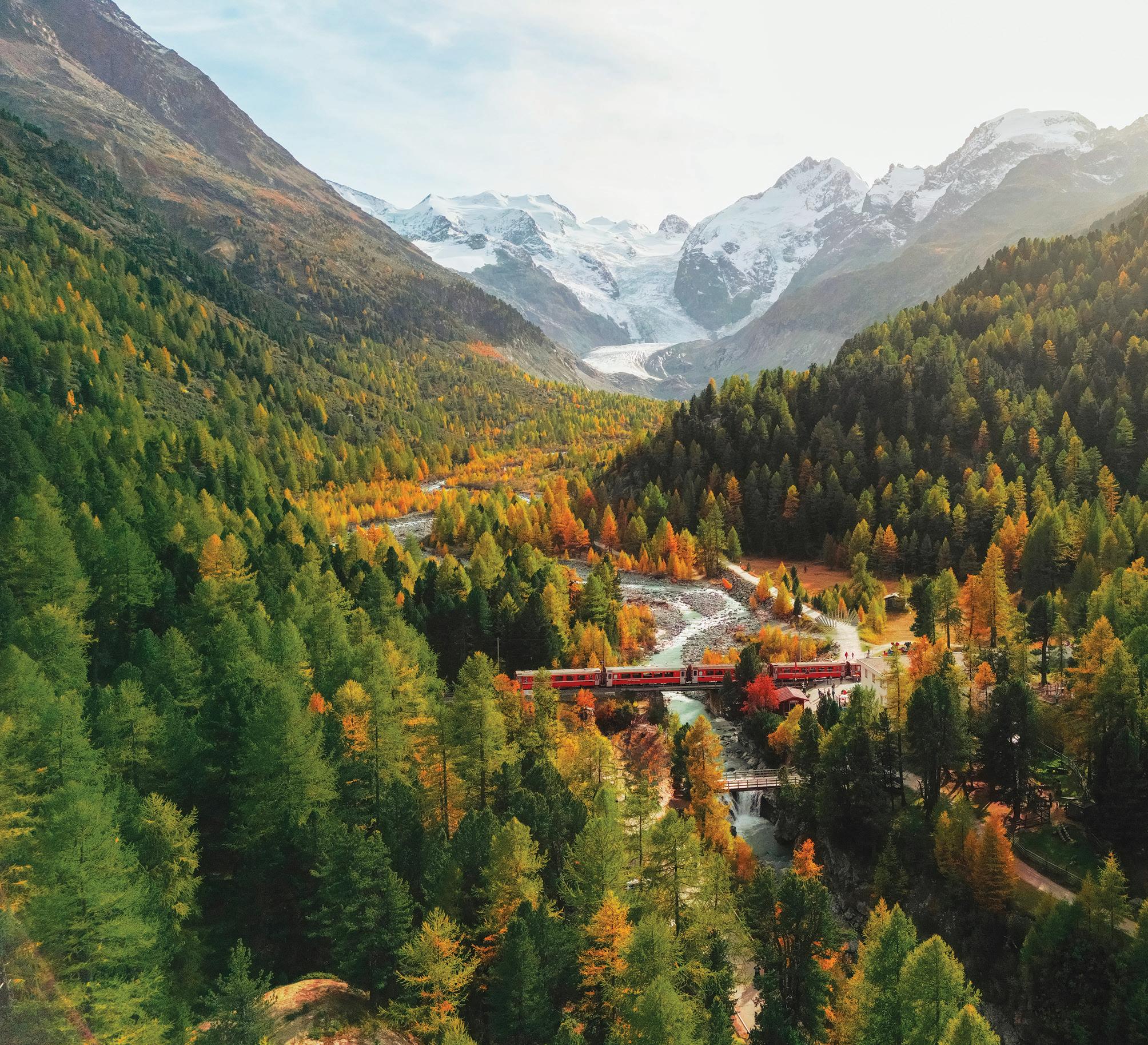
Over the past 55 years, Goway has witnessed travel trends come and go. To understand more about the reasons we travel, we zero in on five trends that capture our moment, and the personal reasons why these trends have such staying power.
Trends shape how we engage with the world. We’re drawn to the allure of the new, the feeling of being on the bleeding edge of something, setting the pace for those that follow. It’s no wonder, then, that trends are so important in travel. Travel is largely about experiencing the new, opening ourselves up to unfamiliar cultures and destinations.
Trends also offer a blueprint in the wake of chaos. “Trends provide clarity and a roadmap for how to engage with the world around us,” explains Jenny Southan, CEO of Globetrender, to the BBC. Considering the unpredictability of the modern world, it’s no accident that people look to trends to offer a signal through the noise.




Trends also define eras. Back when Goway launched in 1970, the world was at the tail end of the Jet Set age, when travelling by commercial aircraft became mainstream. The decade that followed capitalized on commercial air travel to see the birth of mass tourism and package holidays, especially to Europe. In those early days of the mass market era, Goway’s Founder & President Bruce Hodge saw an opportunity to stand out from the market and set a trend that catered to what package holidays were missing.
In the late 1960s, baby boomers were coming of age and were animated by a countercultural spirit. That countercultural spirit bled into the 1970s, when young adult travellers were itching for something raw and authentic. However, the market hadn’t adapted, and a new travel trend offered the way forward. Hailing from Australia, where it was common for young people to rent a van and head overland through the outback, camping along the way, Bruce saw the opportunity for adventure travel to give travellers what they were missing. Goway started operating overland camping trips across North and South America, becoming North America’s first adventure tour operator. By catering to a universal human emotion—the need for adventure—and a generational itch—the need for authenticity—Goway set a trend that impacted travel throughout the decade.
Today, people are still animated by their desire for novelty and authenticity to follow trends when exploring the world. They’re drawn to stargazing and noctourism to take in the majesty of the universe at night, to setjet to their favourite movie locations to make the stories they watch come to life. They slow down the pace with slowcations or escape the sweltering heat with coolcations. Certain trends have stayed the course.
It’s important to remember that behind every trend is a person wanting to discover more about themselves and the world. To reveal the human side of trendsetting and to learn some tips gleaned from a life in travel, we gathered stories from five Goway experts to comment on some of the trends that define travel as we know it.

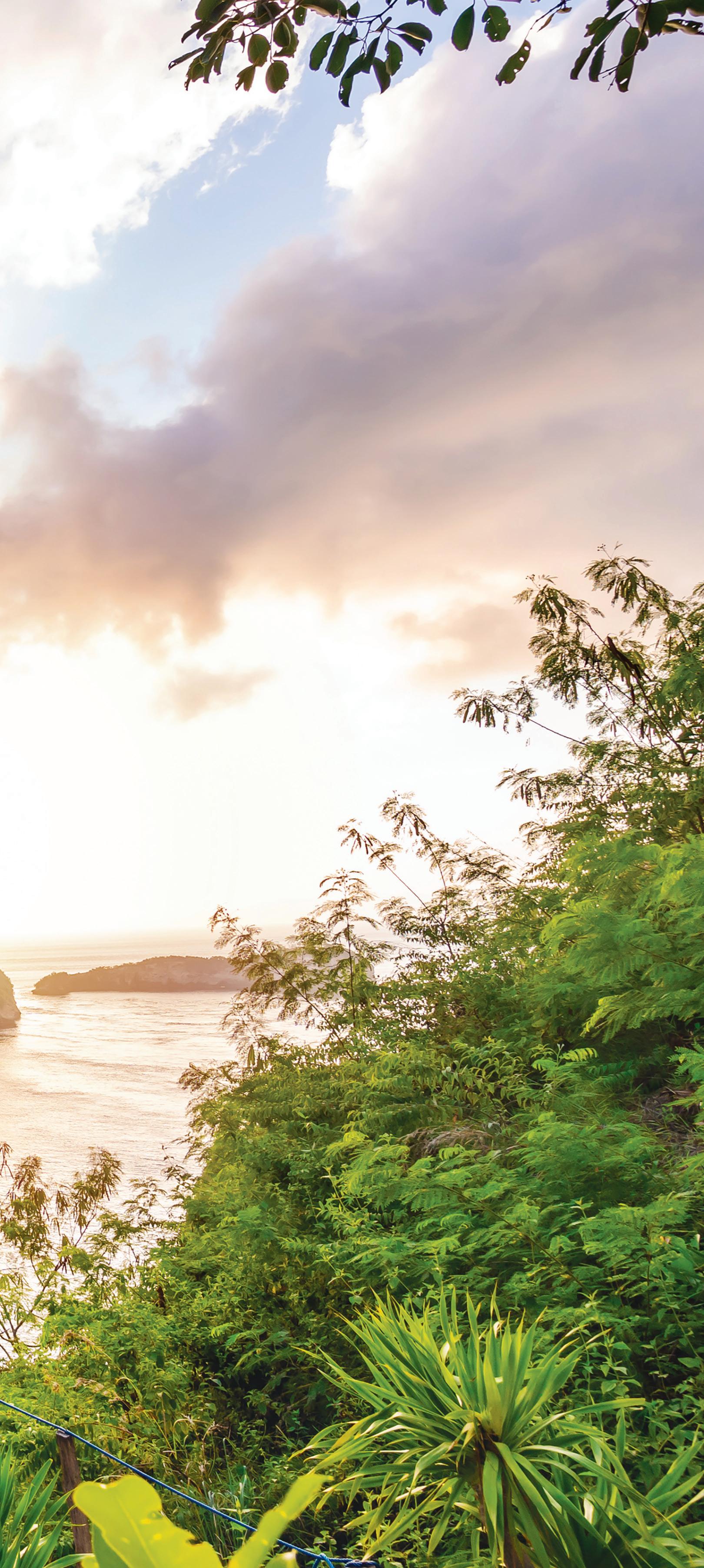
WORDS SEAN HEBERT, VICE PRESIDENT THE AMERICAS
Most people view a honeymoon as an opportunity to book a luxurious hotel in a warm destination, and to unwind after the arduous process of planning and managing the big day. It’s a wedding detox, essentially. My wife and I wanted something a little different. Hence, why we sought out a long honeymoon, which transforms a typical week-long stay in one destination into a more immersive and varied bucket list travel experience.
We decided to build out a custom, two-week itinerary to Costa Rica that was packed with experiences that got our hearts pumping: a snorkelling sail up the Pacific Coast north of Tamarindo; a sloth-spotting scramble in the shadow of the Arenal volcano near La Fortuna; and a quick dip at the foot of a massive waterfall in the cloud forests near Monteverde.
Perhaps most memorable, though, was our stay at the remote and extraordinary Pacuare Lodge, which guests reach via a guided white-water rafting trip into the deep jungle. It was a metaphor for marriage itself—a venture into the unknown, and an embrace of the challenges that we’ll encounter on the long road ahead.
WORDS MARIA SPITMAN, RESERVATIONS SUPERVISOR
As the world grows more accessible, it’s increasingly popular for women to explore the world on their own. Of course, you need to be smart and safe when exploring as a solo female traveller.
Hotel location is key. It’s worth investing a bit to be closer to major sites, major transit lines, and in safer, better-lit areas of the city. Smaller hotels tend to have friendlier atmospheres, and the staff will be more likely to remember your face and notice if a non-guest is there who shouldn’t be. Getting a pre-arranged arrival transfer is also a must, especially in countries with a language barrier. The only time things went sideways in my myriad solo travels
was when I decided I could manage local transit from Istanbul Airport without one. This wasn’t the case, and I wound up taking a taxi and paying far more than needed versus if I had pre-arranged everything. Having an expert travel planner in your corner does wonders for factoring all these things in advance.
I’ve also found that small choices go a long way to keeping you safe and helping you experience a destination more authentically and safely. Dressing like a local helps you blend in and see the country from their eyes; learning basic phrases helps locals open up when you interact with them; and I even go to
a movie while visiting new countries just to get a taste for real local life.
Don’t forget to leave room in your schedule for adventure and whimsy. You need some freedom to explore because experiencing the new and being delightfully surprised by a hideaway bakery or street art is what travelling the world is all about.

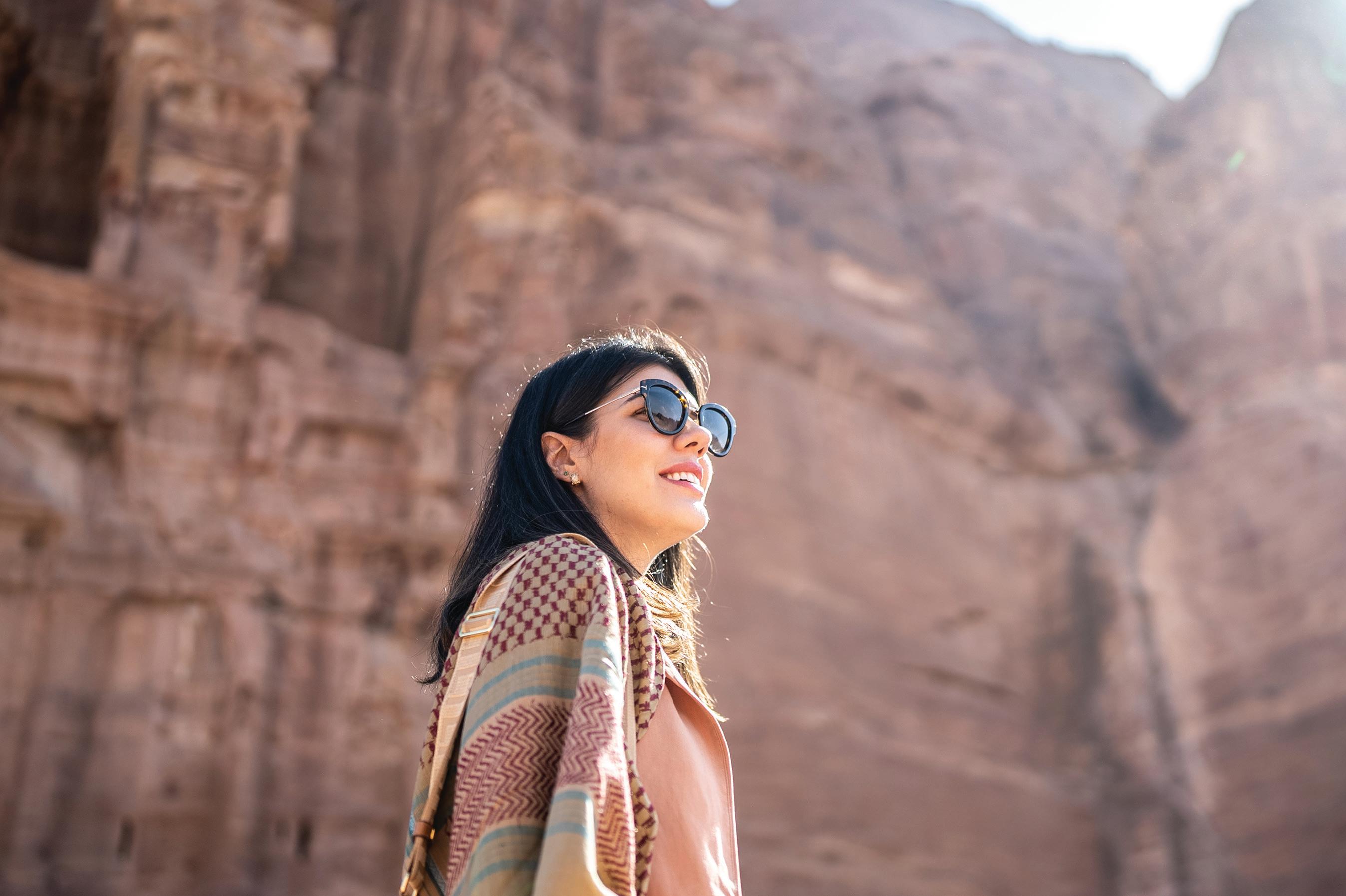


WORDS MOIRA SMITH, VICE PRESIDENT ASIA
Rail travel is slow travel at its best. There’s something romantic and civilized about watching the world unfurl outside your window. If you’ve ever had the chance to travel with Rovos Rail in Africa, you’ll understand what I mean: there’s something decadent and delightful about sipping champagne in an Edwardian bath while watching the African veld roll by.
Travel in 2025 can be hectic. Rail travel is a respite from the stress of airports and highways, offering a calmer and more refined journey. It’s also more environmentally responsible, producing significantly less carbon than a trip by plane or car.
In my own many rail travels, I’ve found that travelling by rail lets me truly appreciate
a landscape. The scenery shifts as you look outside the window. Last year, I rode The Vietage in Vietnam from Hoi An to Quy Nhon and experienced the transformation of the country on the journey south: lush countryside gave way to coastal views, all while I relaxed with premium wines in my plush leather seat.
My personal favourite aspect of rail travel is the social dimension. The shared space and slow pace allow you to connect with your fellow travellers in ways that simply are not possible on other trips. The beauty of rail journeys is that they transform travel time from a necessary inconvenience into the highlight of your trip. You’re not just getting from Point A to B; you’re experiencing the travel journey in its very essence.
WORDS PAUL HOLINATY, PRODUCT MANAGER CENTRAL & NORTHERN EUROPE
As long as I’ve been in the business, there’s been a desire to take advantage of the shoulder season. This term is a broad one, but it generally refers to travelling in the spring or fall when the weather is still pleasant, but the cost is more affordable. The big appeal is the smaller crowds, which means more time to yourself at landmarks.
Of course, if you’ve been to Italy or France in October, you’ll know that the shoulder season is constantly changing, and the peak season is blending into the fall. That’s why this trend has such staying power: it’s a shifting target and one where insider advice is essential to hitting the bullseye.
To take full advantage of the shoulder season, adjust your aim based on the specific destination. In Europe, look East to the Baltics or countries like Romania, Poland, or even eastern Germany, which are gorgeous in the fall, but lack some of the crowds of the Mediterranean. In the Nordic countries, March and early April or September and October offer great weather, fewer crowds, and the chance to see the Northern Lights!
The shoulder season is also an ideal time for road tripping across Europe. There’s less traffic on the roads, even outside the main cities. Remember that the summer is vacation time for locals, but in the shoulder seasons, they’re working, which
means you don’t have to contend with locals clogging the highways. September and October are also flush with local festivals, and not just Oktoberfest. These events are great opportunities to experience the culture in an authentic way.
The shoulder season in Europe will continue to evolve with climate change and shifting travel habits. What will never change is the desire of travellers to hit the sweet spot, and the need for a travel expert to help them make that happen.
The village of Hallstatt, Austria is an ideal destination to enjoy the fall colours of Europe.
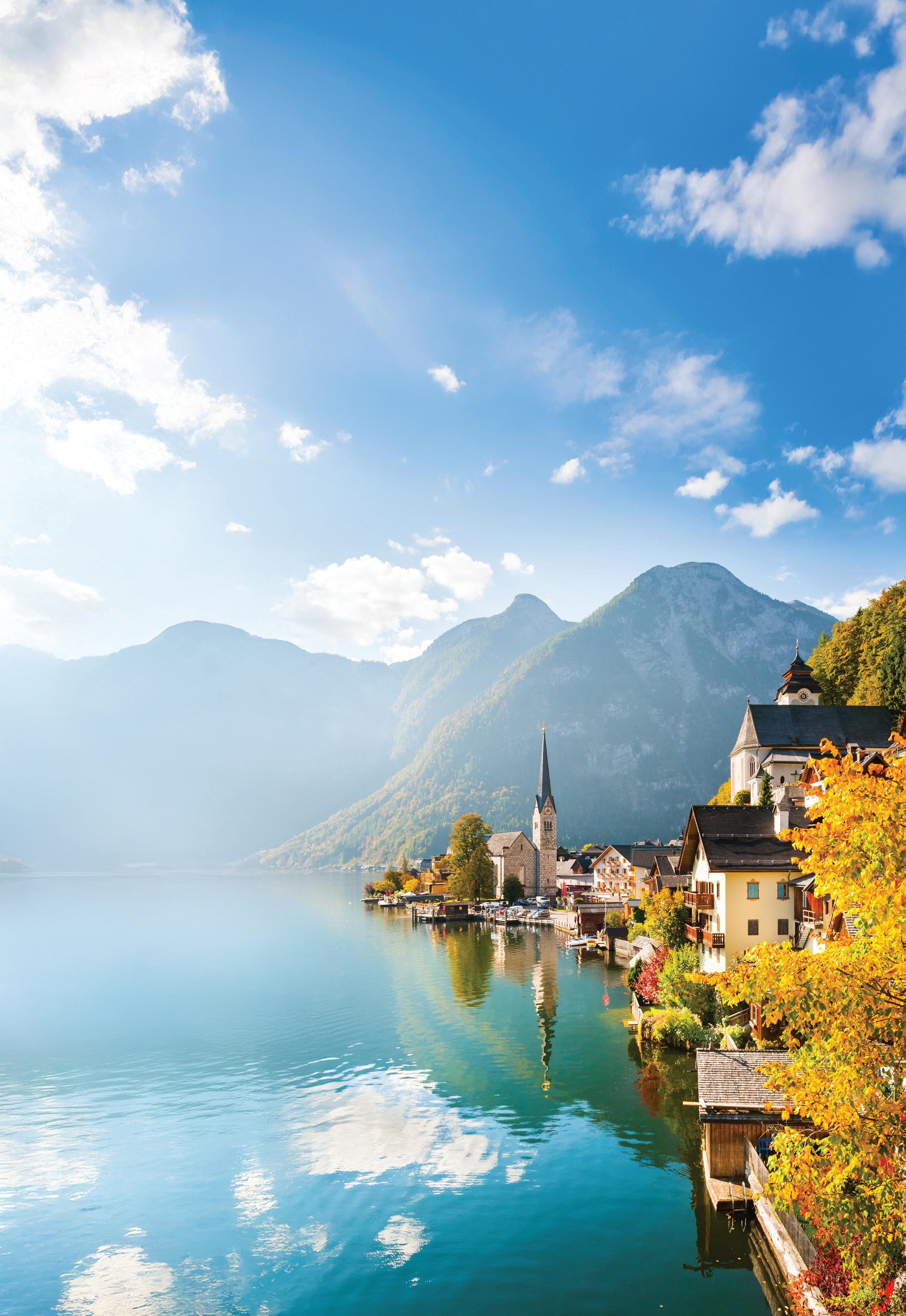
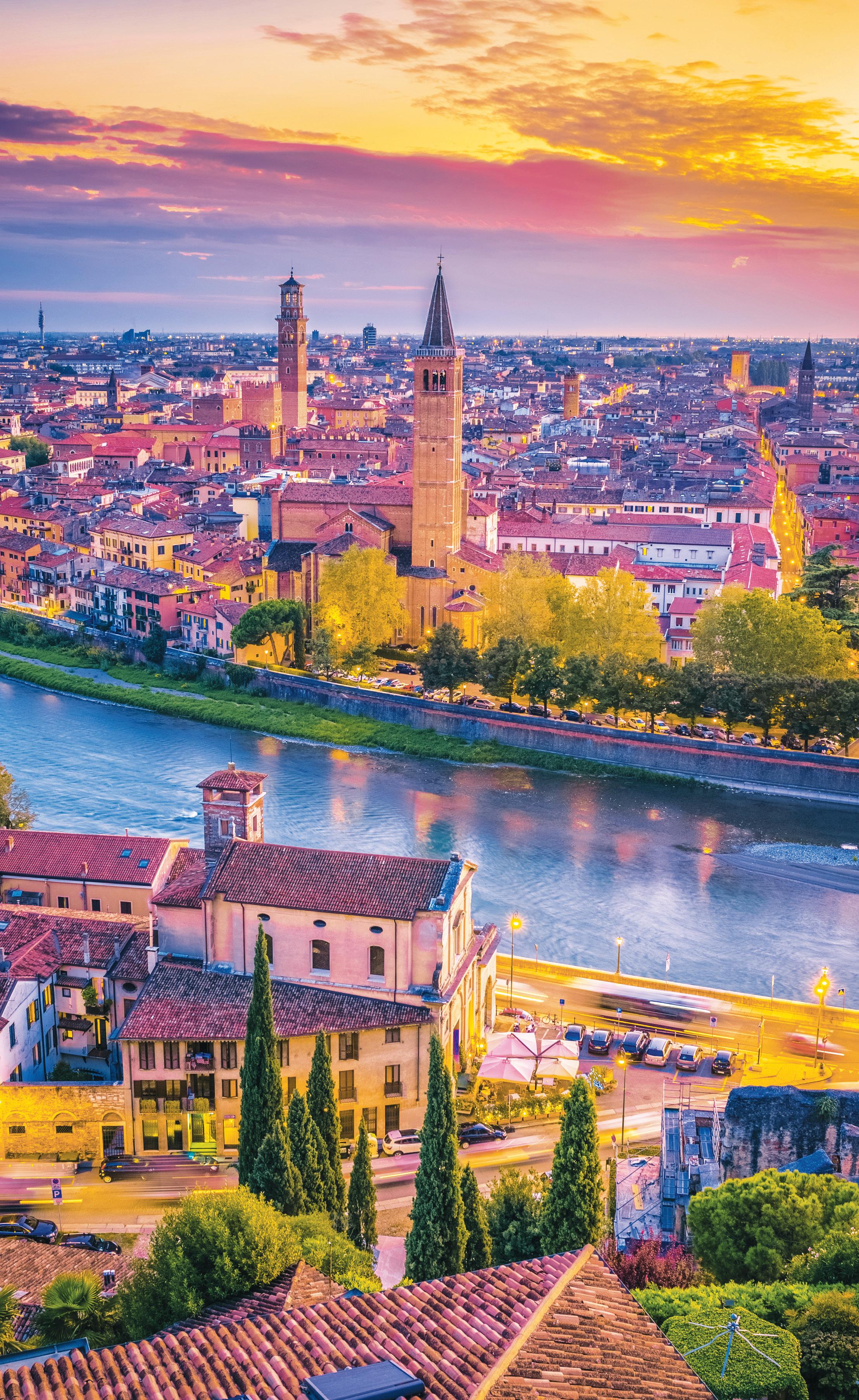
WORDS CAROLYN WEPPLER, SENIOR VICE PRESIDENT
As the world gets busier, more people are seeking out appealing destinations that haven’t been over touristed. Enter the destination dupe, which is a country or city that offers many of the same attractions and experiences as more popular spots, but without the crowds.
Vietnam is a perfect example of a destination dupe. It has excellent travel infrastructure, gorgeous landmarks such as Halong Bay and Ninh Binh, sandy beaches, and lots of cultural appeal, but it doesn’t attract the same volume of visitors as other destinations in Southeast Asia. Destination dupes also naturally appeal to trendsetters; they offer the chance to discover new gems, beat others to the next hotspot, and save money while doing it.
It’s also easy to take advantage of destination dupes within a single country.
For instance, you can seek out Lyon or Verona instead of Paris or Venice. Often, seeking out a destination dupe comes with a more affordable price tag and the chance for more authentic local experiences. The markets are for locals, not tourists, so the produce hasn’t been marked up and the restaurants offer authentic local dishes because they’re not concerned about catering to international tastes.
Certain cities and countries will always be popular, and you definitely still want to visit them in your travels. But destination dupes have staying power because they speak to our desire to stand out and venture off the beaten path while still experiencing the beautiful cities, fascinating cultures, and awe-inspiring nature that the world has to offer.
Hit documentaries are turning real-world events into the ultimate travel inspiration, igniting this hot new trend.
WORDS SAEL FORSTER
There’s a whole world to choose from when it comes to travel, and while that’s a dream come true for any globetrotter, choosing the destination for your next adventure can be overwhelming at times. When too many choices leave you feeling stuck, a little bit of inspiration can go a long way. Inspiration is all around us, especially in our everyday lives, even at the touch of our fingertips. New hit documentaries about real-world events are inspiring fans, old and new, to seek out the events and make them the centrepieces of their travel plans, becoming part of the narrative and community.
On the heels of Taylor Swift’s Eras Tour and its accompanying documentary that drew millions of travellers to 51 cities across five continents, it’s never been more evident that event tourism is one of the hottest travel trends today. According to Bloomberg Economics, Swift’s tour was the highest-grossing tour of all time and contributed $4.3 billion to American gross domestic product (GDP). But inspiration doesn’t just come from epic concerts and a doc from the world’s biggest pop star. Gripping sports docs and deep dives into cultural events also capture the intimate magic of real people and bring their inspirational stories to us
in the comfort of our homes. Only travel, however, is capable of bringing you into these moments.
Maybe it’s the underdog triumph in Welcome to Wrexham drawing you to the energy of a football match in Wales or the high-speed drama of F1: Drive to Survive fuelling your dream of witnessing a Grand Prix in Monaco. These are the two most popular examples of event-based documentaries spurring tourism and new investments. Welcome to Wrexham —released in 2022—played a huge role in the town’s 50% increase in tourist revenue from 2018 to 2023, according to

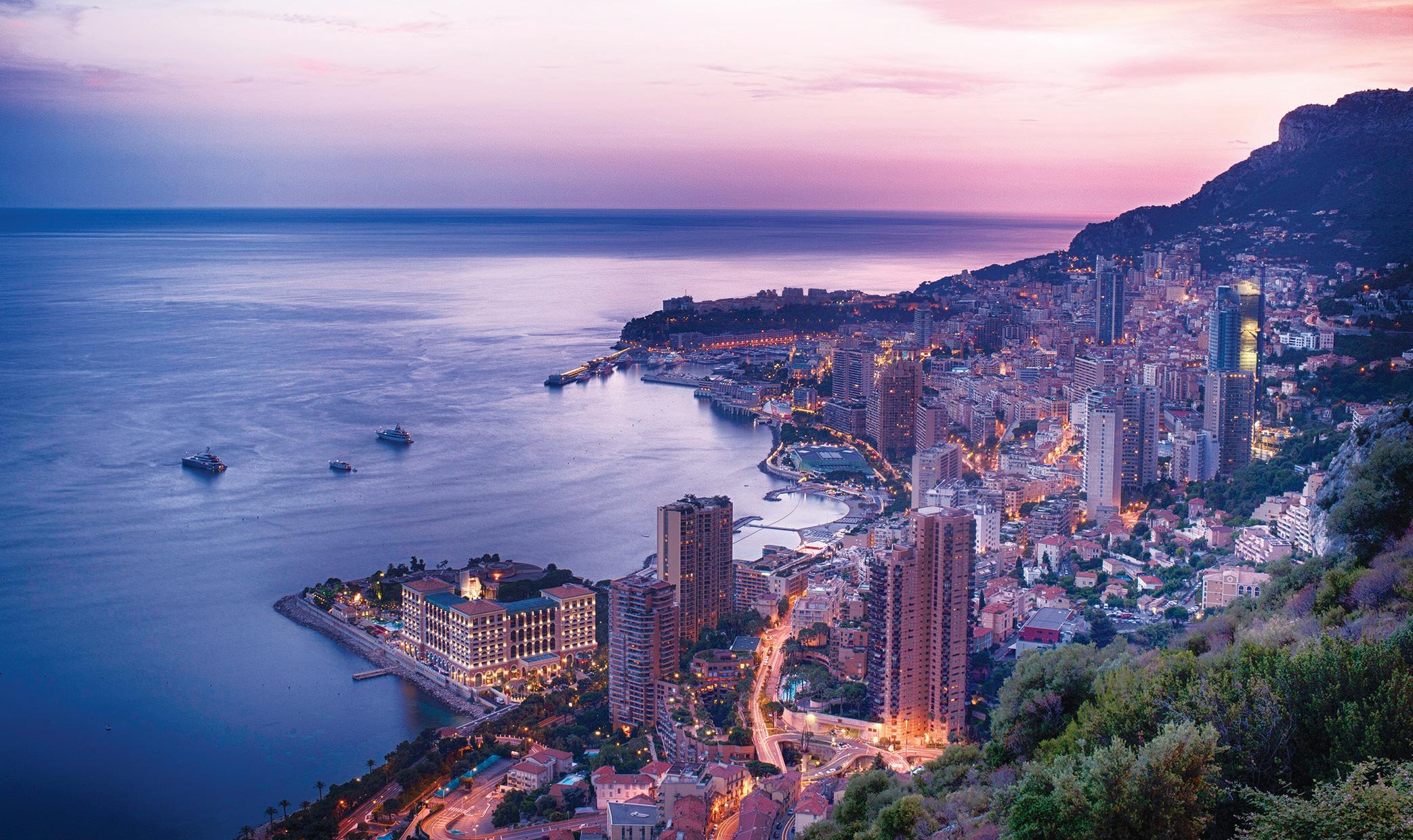
the Wrexham County Borough Council.
The Sports Emmy-winning F1: Drive to Survive—released in 2019–acted as a catalyst to Formula 1’s four consecutive years of top-line growth and a 55% increase in live spectators from 2017 to 2021, according to Formula1.com.
The beauty of this new wave of documentary-inspired travel is that it goes beyond traditional “setjetting.” It’s not just about visiting a filming location but stepping into a real, living story. A skilled director, audio engineer, and editor can bring the roar of an F1 engine to your living room, the pop from the crowd after a game-winning goal,
or the electrifying energy of a stadium of voices singing in unison as your favourite artist performs. But only travel allows you to witness it live, turn around and ask, “Did you see that?!” with fellow fans, old and new.
Only travel lets you become a part of the narrative and carry it on as you leave the Grand Prix in Monaco and celebrate with a night out at the legendary Casino de Monte-Carlo or share a post-match pint at a local pub after watching Wrexham get promoted to League One. By immersing yourself in the cultures and history of these events, you elevate them beyond
anything you might watch on a screen. They become unforgettable moments that you can touch and feel. And with an ever-growing library of documentaries about the world’s most fascinating stories, there’s no shortage of inspiration for your next adventure, potentially sparking lifelong fandom and tradition. Why just watch when you can experience it for yourself?
Discovering the artistry, precision, and unseen magic behind their extraordinary shows.
WORDS MITCHELL ALEXANDER FAWCETT
Iremember this feeling. It’s been a couple decades since I last waited in the wings of my high school’s Romeo and Juliet production, but I’ll never forget the electric hum of a theatre about to come alive. I’m backstage at JOYÀ, a surreal and spectacular Cirque du Soleil show. Performers stretch in quiet focus, stagehands move massive set pieces in hurried choreography, and just like in high school, I stay out of the way.
Cirque du Soleil started as a group of street performers in the early 1980s in a small Quebec town. Today it is a global phenomenon, continually raising the bar with impossibly complex and elaborate productions. Without a trace of tacky circus tropes, each show weaves fantastical stories into dreamlike settings. Magic unfurls in every set, prop, and costume. The performers are true marvels, pushing the limits of physics and human endurance. To be an audience member is an astounding and unforgettable experience. To be invited behind the curtain, like I am today, is a rare privilege.
JOYÀ is one of Cirque’s permanent residencies. Their first touring production in 1984, Le Grand Tour du Cirque du Soleil, was a Canadian success that paved the way to the global stage. The swirling stripes of their big top tents now rove the world year-round. A permanent home for a show, however, is an even grander foundation—roots that grow into evermore intricate and immersive spaces. I’ve travelled to Mexico to experience JOYÀ, on the grounds of the sprawling VidantaWorld Riviera Maya resort. Other permanent shows can be found in Berlin, Honolulu, and most famously, Las Vegas. Another Mexican residency is planned with a second VidantaWorld partnership in Nuevo Vallarta, opening in November 2025.
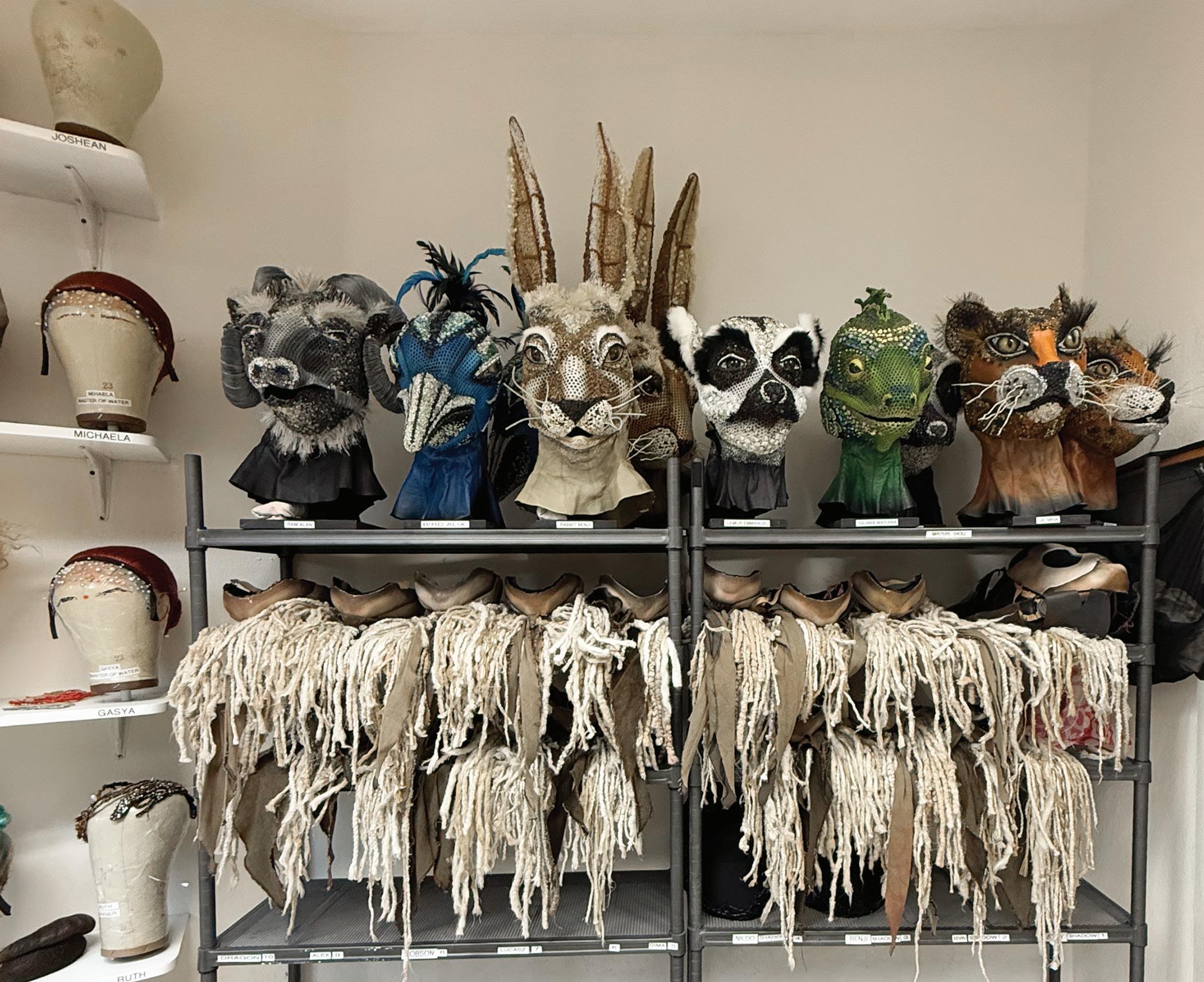

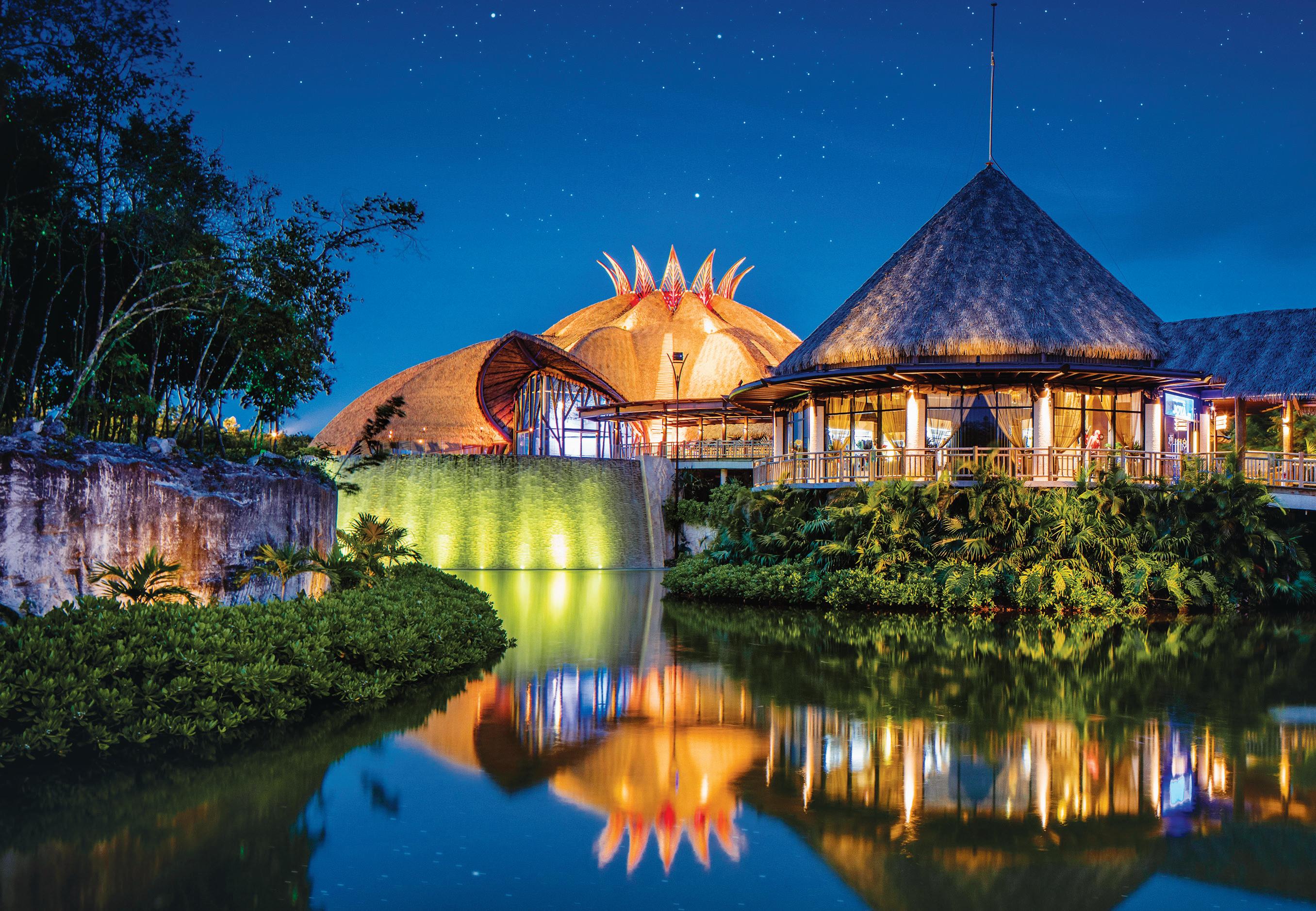
My guide is JOYÀ’s artistic director Caroline Sicard, who oversees the entire production. She moves with the poise of a lifelong ballerina, and when she stands to speak her feet snap intuitively to a dancer’s pose. She moves with a sense of urgency—curtain time is in just a few hours, and her incredibly keen eye will ensure every excruciating detail embodies the ornate vision of the show’s founding creative team.
Caroline’s illustrious career has always straddled onstage performance and backstage craft. After dancing in the full run of Cirque’s Viva Elvis show in Vegas she transitioned behind the scenes, maturing her artistic vision under the organization’s unwavering commitment to greatness. Beneath her baseline of rigor and urgency still lies a performer’s love of being on stage. “Did you know that an audience’s heartbeats synchronize when
they watch a live performance together?” she asks me with wide eyes.
The tour takes us through catacombs of hallways, ascending and descending whirlwinds of stairs that cling to the 650-seat theatre. We dodge trolleys and wardrobe racks. Workspaces appear in caverns throughout, where industrious crew members are buzzing in silent camaraderie.
A chart on the wall labelled “Wig Schedule” marks our entry into the wardrobe department. Three hundred dreamlike costumes are created and produced right here by designer James Lavoie and his team of six. Every piece of fabric is an opportunity to tell a story along with its character: the pleating on the edge of an archivist’s dress is made to look like the pages of a book; the patterns of an entomologist’s pants are drawings of insects. The most intricate of all are the
animal masks stacked on a shelf ready to be donned, glimmering with thousands of jewels and beads that have been lovingly applied by hand.
I’m invited into a prop workshop and browse the orderly chaos of fairytale artifacts. I see a worker repairing the eyepiece of an antique microscope. This is an element so inconceivably small, essentially invisible to the audience, and yet, to the crew it’s critical. Every team member is aligned in the pursuit of excruciating attention to detail. It is a shared reverence to the audience, and the commitment to deliver an exceptional experience for them.
In every work room is a large digital clock marching toward curtain time. Caroline eyes one and rushes us to the final stop on my tour. We leave the chilled hush of the theatre, stepping into

the warm humidity and down a winding boardwalk back toward the entrance to the grounds. From here I can properly marvel at the JOYÀ landscape, designed to truly immerse every guest into the story’s lush and colourful world. At the centre is a large lagoon stamped with a perfectly circular island of trees. Palapas hug the water, dotted with boutiques and restaurants to serve guests before and after the show. Sprouting just above the trees sitting atop a grand waterfall is the theatre, with a roof shaped like a blooming flower. Everything has been designed and constructed with the JOYÀ story in mind. This is something a temporary tent just can’t deliver.
A small group is waiting under the shade of a thatched roof. Caroline has arranged for me to meet some of the cast. This is talent on another level. They perform incredible feats of strength and agility

all while embodying the surreal identities of their characters. Twelve different nationalities are represented in the cast of 35. Without the need to tour, they live, train, and perform right here on the same compound. It’s an artist’s collective, surely worthy of its own unscripted TV series, complete with pets, spouses, and siblings. I part ways with Caroline and the cast— showtime is just a couple hours away.
It’s golden hour, just before sunset, when I return, and the grounds are alive with guests. When I’m taken to my seat there is one more surprise—this is a dinner show. JOYÀ’s grand theatre also houses a culinary team that serves 72 lucky guests at tables surrounding the stage. It’s a fittingly theatrical menu, designed in collaboration with Vidanta’s Corporate Chef Alexis Bostelmann. My menu is printed on a paper-thin cracker, my starter enshrouded in mist, my main course
revealed in my own personal treasure chest, and dessert revealed within an antique book. Each course is vibrant with local produce made even more colourful with edible floral adornments. Authentic Mexican and Mayan flavours dance on the palate.
The grand performance surpasses every expectation. My experience today has given me a special connection to these extraordinary performers and the remarkable crew who support them. This theatre, a jewel in the jungle, is their home. Being invited here behind the scenes was a privilege that has left me with a profound appreciation for their craft. I’ve seen many Cirque du Soleil performances in my life, and my experience at JOYÀ will always be the most memorable.

A desert oasis south of Tel Aviv is a hotbed of noctourism that abounds with ancient history and magnificent night skies.
WORDS MICHELLE KAMIEN

Geographically, Israel is a tiny country, only about 18 percent the size of New York state. But despite its size, you can do a lot here: ski on Mount Hermon, surf on the Mediterranean, hit the clubs of Tel Aviv, or immerse yourself in the spiritual traditions of Jerusalem. And it’s all within a few hours’ drive. And then there’s the desert, where the night sky is unlike anything you’ve ever seen. Noctourism is one of the hottest trends these days. It’s all about travel experiences that can only be done at night, such as stargazing or bioluminescent tours. The Judean Desert is a perfect place to experience noctourism for yourself.

The Milky Way lights up the night sky in the darkness of the Israeli desert (left); Michelle and her travel companions bond around a firepit (top); Sunrise as seen from the Masada, the massive fortress ruins alongside the Dead Sea that used to house the palace of King Herod (right)

There’s nothing quite like leaving the hustle and bustle of Tel Aviv and driving just 1.5 hours south to Kfar Hanokdim, a true desert oasis. Stepping out of the vehicle, you’re surrounded by endless rolling hills and rocky landscapes stretching as far as the eye can see. As soon as we arrived, our Bedouin hosts, dressed in white jellabiyas, welcomed us and invited us for a traditional dinner. We sat on floor cushions around a low table and shared a feast of kebabs, hummus with warm pita, rice pilaf, and for dessert, baklava, dates, and Arabic coffee. Beyond the delicious food, what stood out most was our hosts’ hospitality. The Bedouins have lived in the desert for centuries. Experiencing their way of life made me appreciate not just the landscape but the people who have thrived in it for so many generations. After dinner, we rode camels to get a feel for how people historically travelled through the region.
Once night fell, we wandered deep into the desert, leaving the lights of Kfar Hanokdim behind, until only the moon and stars lit the way. The silence was absolute. We sat down and reflected on our lives, taking in the surreal feeling of being on the other side of the world surrounded by nothing but sand, sky, and stillness. Noctourism is all about escaping the crowds, embracing the night, and experiencing a destination in an unreal way. There’s something special about seeing a place when most of the world is asleep, and in that moment, the Judean Desert felt like it belonged only to us. It was a moment of peace, reflection, and
awe for the world around me—until I suddenly remembered that I was not alone. The realization that scorpions were probably lurking nearby snapped me right out of my deep thoughts.
From there, we returned to Kfar Hanokdim, set up a bonfire, sang songs, and played cards. We spent the night in a traditional Bedouin tent made of goat’s hair. Drifting off to sleep in the desert was peaceful, with nothing but the cool, dry air and the sound of the wind as company.
We woke at 4am the next morning to hike up Masada and catch the sunrise over the Dead Sea. The ancient fortress is reached via the Snake Path, a steep 2.7 km (1.6 mi) climb. The trek was tough but reaching the top just in time to watch the sunrise over the desert made every step worth it. It was moving to stand there knowing that thousands of years ago, people stood in the same spots, looking out at the same view. It’s also the ideal climax to a noctourism experience. Once the sun was up, we drove 10 minutes to the Dead Sea, where we floated at the lowest point on Earth before continuing to Eilat on the Red Sea.
I had been to Israel before, but this trip felt different. It wasn’t just about seeing the desert but about immersing myself in it. Israel may be small, but it’s not lacking for personality, or stories and experiences to take your breath away.

The nations of El Salvador, Guatemala, Belize, and Nicaragua are in the midst of a domestic resurgence.
A few years back, if you asked a friend to go to one of the many nations in Central America that wasn’t named Costa Rica or Panama, they’d ask the big question: “Is it safe?” You might have hesitated about the answer then, but you shouldn’t now. Central America is safe and has experienced a stunning resurgence in recent years.
El Salvador has led the way. This small nation on the Pacific coast has seen its crime rate drop by 98 percent over the past decade. That’s an unprecedented

turnaround and proof of how quickly Central America is developing. In El Salvador and the nearby nations of Guatemala, Belize, and Nicaragua, a more robust tourism network is ready to welcome travellers from across North America.
People are finally waking up to the fact that these countries are home to astounding natural and cultural beauty. Robert Miller, Product Manager for The Americas at Goway, visited El Salvador last year and experienced the smoky volcanoes near
Cerro Verde, the pristine shorelines of El Tunco, and the incredible cuisine and views of Lake Coatepeque. “Having time to wander and relax in the small town of Suchitito was an unexpectedly special highlight,” says Robert. “It’s roughly two hours by car from San Salvador and is one of the most charming and laidback towns I’ve ever visited.”
Of course, El Salvador is by no means the only place in Central America that is ready for the limelight. Take Guatemala, which has the highest concentration
of Mayan ruins for a country its size. It’s home to the UNESCO-listed ruins of Tikal, famous as the Rebel base on Yavin IV in Star Wars, as well as the ruins of Uaxactun, one of the oldest Mayan cities in the world. I remember exploring deserted passageways feeling like Indiana Jones. History is palpable here, but it’s not dead. Rather, Mayan culture is alive and thriving in Guatemala today, which you’ll glimpse in the markets of Chichicastenango and Lake Atitlan, renowned for their colourful textiles.
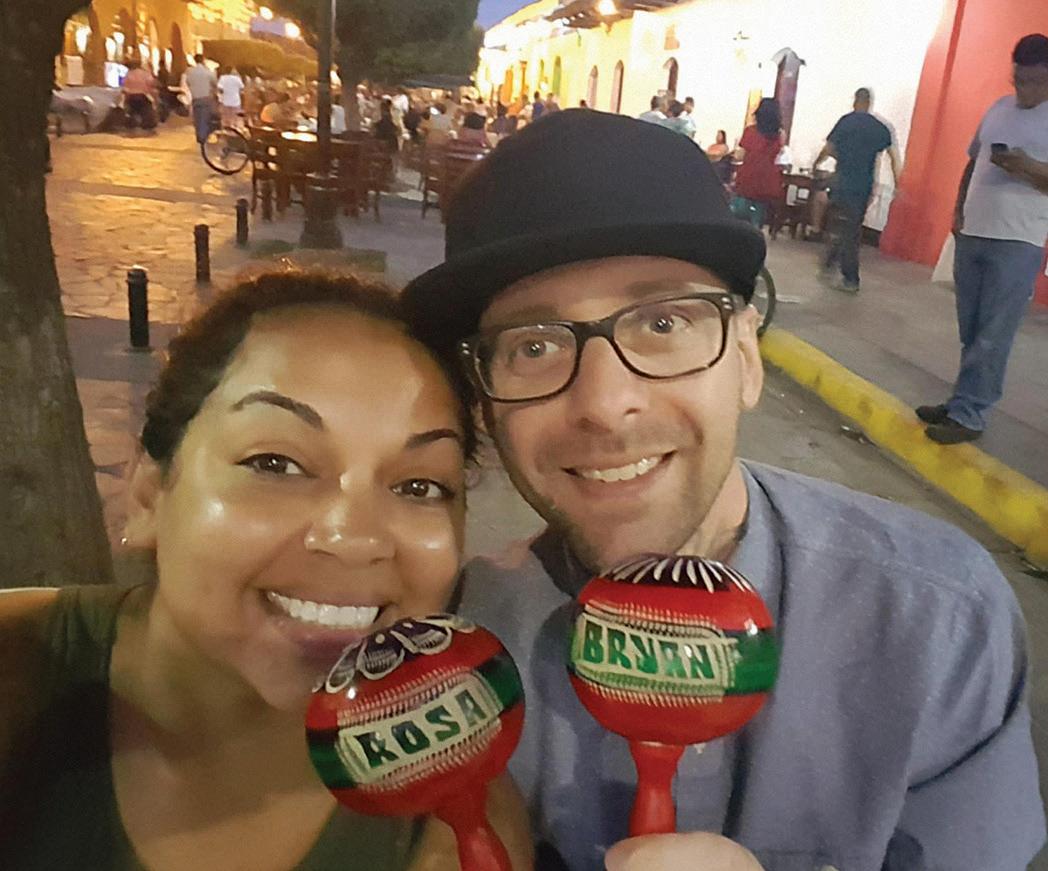
Across the border to the east lies Belize, which is home to more gorgeous Mayan ruins, notably Xunantunich and Caracol. English is the official language here, which makes it a great first-time destination for travellers branching out into more parts of Central America. It’s also a great beach spot and home to the world’s second-largest barrier reef. There’s a lot to do: snorkel alongside sea turtles and nurse sharks on the Belize Barrier Reef; feast on local delicacies in Ambergris Caye and Placencia; explore the jungles of Cayo District in search of jaguars.
Finally, across Costa Rica’s northern border lies Nicaragua, the Land of Lakes and Volcanoes. If you like the outdoors, this place is made for you. You can hike along the rim of Masaya, an active volcano, explore Ometepe Island, the region’s largest freshwater island, and try your hand at surfing in San Juan del Sur. It’s beautiful, affordable, friendly.
It’s also a place where people know how to celebrate life to its fullest. I remember one Christmas Eve in Nicaragua waking to a commotion at midnight. I went onto the roof to investigate and was greeted by a 360-degree view of the most intense fireworks display I’ve ever seen. Every street was filled with families and neighbours celebrating Christmas together.
There’s a lot to love about this part of the world. It’s beautiful. It’s friendly. It’s bursting with life. And it’s safe. It’s time for more people to experience Central America’s new chapter for themselves.

An unforgettable small group journey awaits.
Go beyond the tourist trail with Odysseys by Goway. Slow down the pace, enjoy intimate experiences, and receive premium service on trips to over a dozen destinations worldwide.


Here or visit goway.com/odysseys

Being a group leader is a rewarding experience that allows you connect with your community while travelling the world.

Have you ever dreamed about travelling the world, eating local cuisine, and staying in fabulous hotels? You can spend your days visiting local markets and going on shopping sprees in some of the world’s swankiest malls, and nights laughing with your friends at trendy restaurants and bars. Maybe you splurge with a private yacht cruise off the coast of Dubai or a professional photoshoot on the cliffs of Santorini. Sounds like a dream, right? But it’s becoming a reality for more and more people.
This is the life of a group leader. Group travel continues to trend within the world as more travellers than ever before realize the value of becoming a group leader and planning group trips for their community. You don’t have to be a travel professional to be a group leader. You just need a community, a desire to go, and Goway GroupsOnly can take care of the rest. To get started, you can follow four easy steps:
1. Gather Your Community
Think about the people you would most want to travel with and get in touch.
2. Define Common Interests
Learn what interests everyone in your crew, whether that’s hiking, birding, or shopping like a starlet.
3. Share Bucket Lists
Figure out what your shared dream destination is and what activities are must-dos. Sharing a poll on social media is a great way to get this information.
4. Start Planning
Get in touch with Goway GroupsOnly to help you plan the details and make the magic happen.
Once you enjoy a taste of group travel, you can’t go back. Just ask Katherine and Ernest Escobar. This duo got into travel to explore bucket list destinations, experience different cultures, and feast on great foods around the world. But they expanded into groups to share these experiences with others. “By bringing a group, we feel that we can make the trip affordable for everyone,” Katherine said. “There is nothing better than travelling the world with your friends and making new friends along the way.”
Katherine and Ernest have planned several group trips with Goway GroupsOnly, including food and history tours of Egypt. “I am an absolute history buff, so I enjoyed everything about Egypt,” said Ernest. “The pyramids, the storytelling, everything makes you feel like you stepped back in time. But the highlight for me was the delicious shawarma, which was outstanding.”
With group travel, you get to follow your own passions and make dream vacations happen for your community. You also get to make money planning trips and even travel for free. It’s a travel experience that offers the best of both worlds.
It’s time to make group travel your side hustle and experience the magic for yourself.
Rely on the experts at Goway GroupsOnly to plain a tailor-made trip catered to you and your community’s unique passions and interests. Explore the world alongside 10 or more of your fellow travellers and experience the magic of group travel.



By slowing down and adding on nearby destinations to your trips, you’ll enrich the whole travel experience.
WORDS CAROLYN WEPPLER

People often think of detours as unnecessary diversions, but in travel, they can be much of the fun. When I travel, I like to add three to four days to my trip to detour into a nearby destination, which lets me discover new landmarks, cultures, and experiences without straying too far afield.
So many popular countries have neighbouring destinations that are worth the detour. I encourage you to go beyond a simple stopover. Stay for several days and dig into the destination on a deeper detour. You’ll be surprised by what you discover. If you’re heading to Costa Rica, detour into neighbouring Nicaragua, where you can hike the black slopes of Cerro Negro Volcano and try surfing on the beaches of San Juan del Sur. If you’re going to Vietnam, continue up the Mekong into Laos and see the golden temples and monks receiving morning alms in Luang Prabang. If you’re touring the pyramids in Egypt, extend into Jordan to see Petra, float in the Dead Sea, and spend a night in the desert of Wadi Rum.
As well, deeper detours don’t just happen with neighbouring countries. They’re great to consider within a single country as well. Take Indonesia: Bali is undeniably wonderful, but you should

detour to Java to explore the magnificent temples of Borobudur and Prambanan. Or consider France: everyone wants to go to Paris, but not everyone puts Lyon on their travel plans.
Lyon is smaller and more affordable but packed with exceptional restaurants and grand architecture. It’s a completely walkable city where you can explore the traboules, the secret passageways of Vieux Lyon that were used during the Silk Trade through to the French Resistance during World War II (a guided tour really unlocks the history). Speaking of silk, Lyon is a great place to purchase an artisanal silk scarf or tie. You should also ride the funicular up Fourvière, the hill in the centre of town, to explore the Basilica de Notre-Dame de Fourvière and the Ancient Theatre of Fourvière, which was built by the Romans in the first century BC. Don’t forget to visit the local markets, including Les Halles de Lyon Paul Bocuse or the open-air market that pops up along the river.
There’s so much to discover on a deeper detour. Go beyond the stopover, extend the travel journey, and experience what wonders await.


Goway offered adventure camping tours in Australia using mighty 4WD expedition vehicles from AAT Kings.
In the late 1980s, camping trips were a trending way to explore the Australian outback. Operating with Bill King’s Australia Adventure Tours (AAT Kings), Goway took travellers on a Red Centre Safari to explore Uluru and Kata Tjuta, see Indigenous cave drawings, and camp each night under the stars of the outback. The remote adventures were made possible by Desert Cruisers, massive 4-wheel drive expedition vehicles that could pass through all manners of terrain and carry all the necessary supplies for an entire group. These intrepid vehicles were state-of-the-art ways to explore the wilderness at the time.
Our travel stories seek to inspire, but there’s nothing quite like living the adventure for yourself. Luckily, you can experience the tales of globetrotting you’ve read in these pages on a tailor-made trip with Goway.

Savour the Flavours of India
Embark on a culinary journey through India to discover regional cuisines in Delhi, Kolkata, Chennai, and Mumbai.
See “On the Slow Food Trail of Mumbai” (pg. 26)


Discover more of Queensland, South Australia, and the Northern Territory with these perfect trips for first-time visitors.
See “Australia’s New Trendsetters: Beyond the Icons” (pg. 30)


See the Sights in Switzerland
Soak up Swiss culture and experience the famous views of the Swiss Alps on a private tour of the nation.
See “Swiss Timing Is Everything (Unless the Wind Disappears)” (pg. 34)

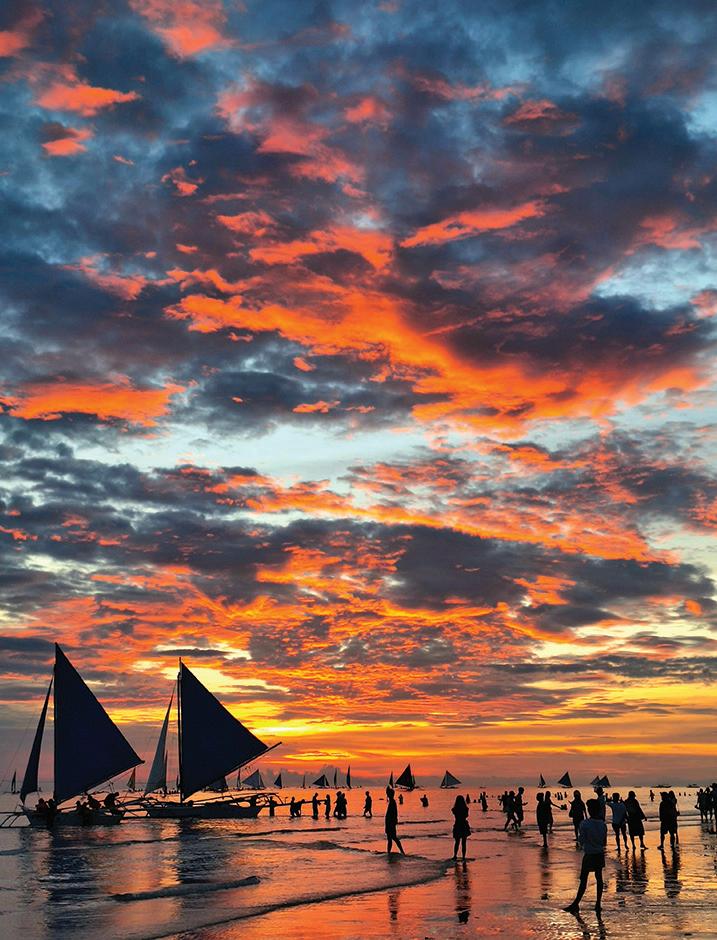
Hit the Beach in the Philippines
Island hop through the Philippines to experience its year-round warm weather and pristine beaches.
See “Chasing Sunshine in the Philippines” (pg. 40)


Explore Sami culture in Finnish Lapland and unwind in a landscape defined by the Northern Lights and the Midnight Sun.
See “Finding the Joy of Missing Out in Finland” (pg. 42)


Experience
See “Behind the Trends That Define the Way

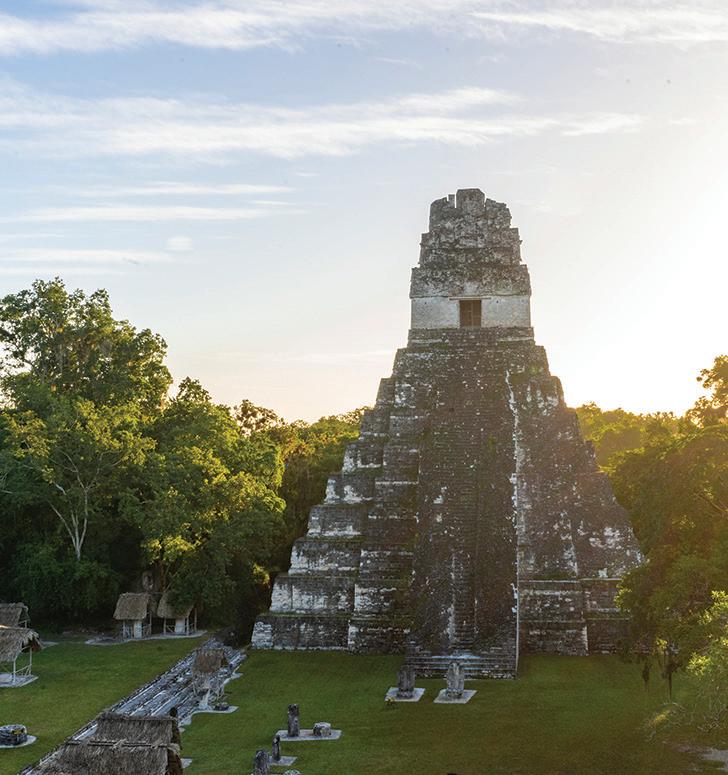
Discover a New Side of Central America
Go beyond the gulf and experience the trendsetting wonders of Belize, El Salvador, Guatemala, and Nicaragua.
See “Central America’s New Chapter” (pg. 62)
Experience a better way to travel.
For 55 years we’ve helped travellers explore the world on tailor-made trips. We’re committed to providing an excellent experience from first booking to final landing and want you to be so happy with our services that you recommend us to your family and friends.
Every trip is customized to your exact interests.
Experience exclusive travel products with up to 5-star accommodation and a focus on private guiding.
Enjoy expert advice from a Destination Specialist who knows travel inside and out.
Explore over 115 countries on all 7 continents.
Rely on 24/7/365 in-destination support via SMS and WhatsApp.



A person who has chosen a lifetime of travel.
